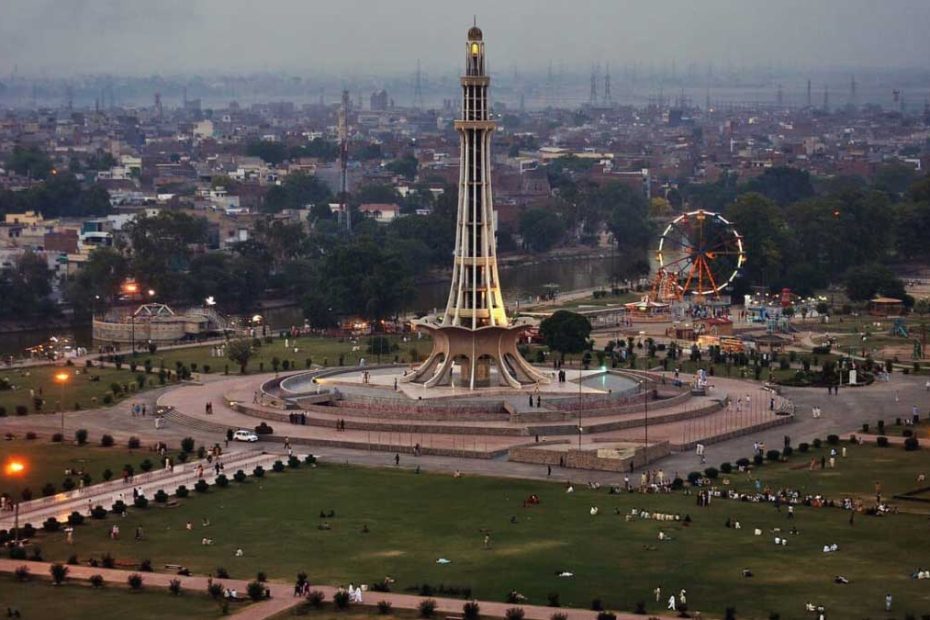Imagine a land where towering mountains kiss the sky, emerald valleys stretch endlessly, and ancient cities whisper tales of history. Pakistan, often overlooked by travelers, is a treasure trove of breathtaking landscapes and vibrant culture. Whether you’re an adventure seeker, history buff, or nature lover, Pakistan offers an array of stunning destinations that promise unforgettable experiences.
From the majestic peaks of the Karakoram Range to the serene shores of the Arabian Sea, Pakistan’s diverse beauty is unparalleled. Ready to discover the hidden gems of this incredible country? Let’s explore 21 beautiful places in Pakistan that should be on every traveler’s bucket list.
Key Takeaways
- Pakistan offers a diverse range of beautiful destinations, from mountainous regions to coastal areas, each with unique attractions and cultural experiences.
- Swat Valley, also known as the “Switzerland of Pakistan,” features lush landscapes, alpine forests, and historical sites, making it a popular spot for nature lovers and adventurers.
- Hunza Valley boasts picturesque landscapes, snow-capped mountains, and fascinating geological formations like the Passu Cones and Attabad Lake, providing a blend of natural beauty and cultural heritage.
- Many of the highlighted places, including Fairy Meadows and Deosai Plains National Park, are ideal for trekking enthusiasts and offer awe-inspiring scenery and wildlife.
- The remote and pristine locations like Yarkhun Valley and Phander Lake present serene escapes with opportunities to explore less-visited natural wonders and local cultures.
- Historical and cultural sites such as Lahore and Rohtas Fort provide deep insights into Pakistan’s rich heritage, combining architectural marvels with vibrant local traditions.
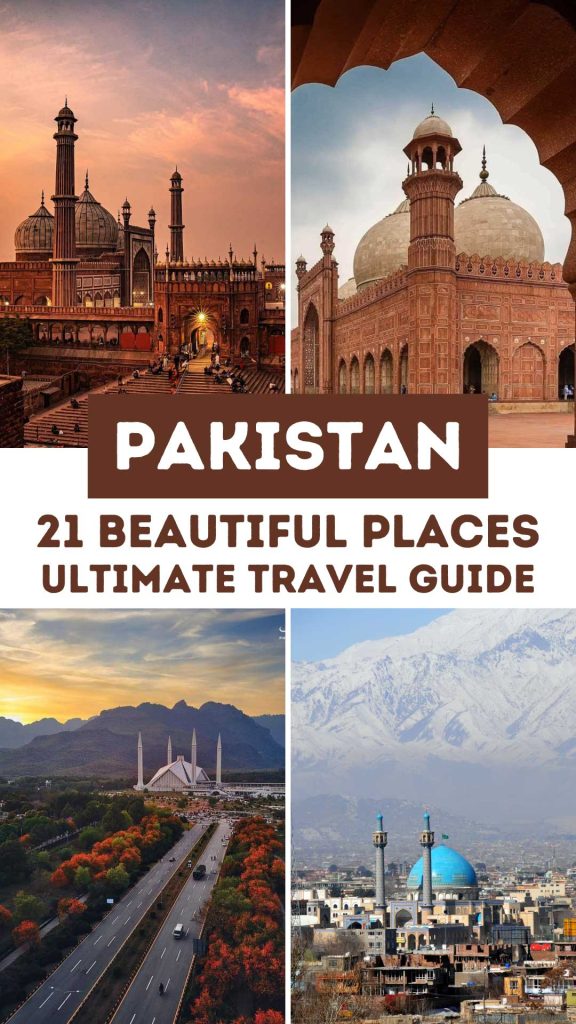
Swat Valley
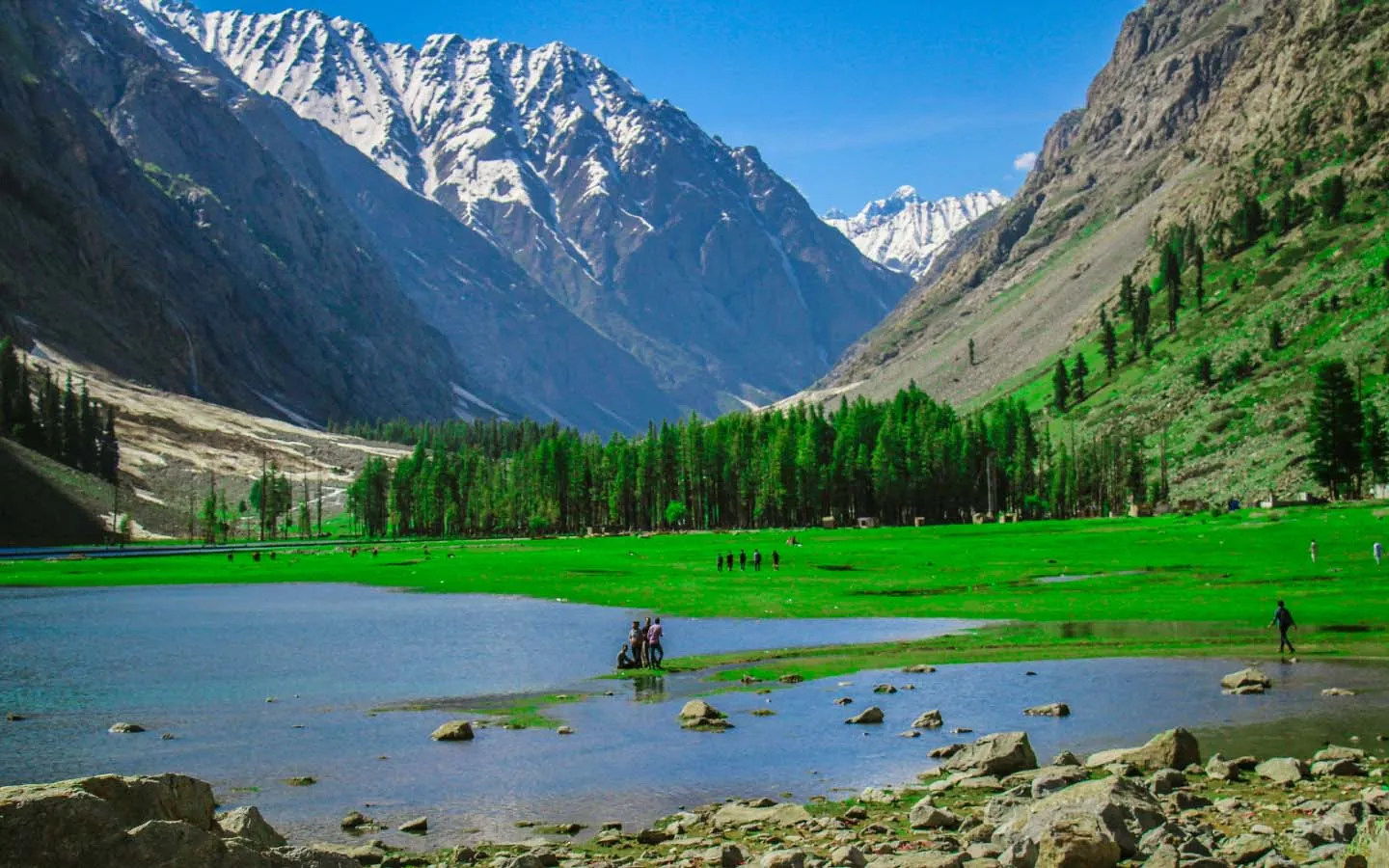
Swat Valley, often called the “Switzerland of Pakistan”, is located in the Khyber Pakhtunkhwa province. Known for its lush meadows, alpine forests, and rivers with clear blue waters, Swat Valley combines natural beauty with rich history. The valley’s picturesque villages and bright green fields make it a must-visit destination for nature lovers and adventure seekers.
Boyun Village
Boyun Village, also known as Green Top, is a short drive or an uphill walk from Kalam town. This village offers a panoramic view of the valley below and is considered one of the most beautiful villages in the area. It’s an easy day trip from Kalam and provides a perfect snapshot of Swat’s natural splendor.
Kandol and Spindhor Lakes
About 2 hours away from Kalam town, Kandol and Spindhor Lakes are pristine alpine lakes set against a backdrop of towering peaks and lush greenery. These lakes attract adventurers and photographers alike, offering breathtaking views and serene surroundings.
Ushu Forest
Ushu Forest near Kalam is a dense cover of pine trees that extends for miles. The forest is perfect for trekking and picnicking, offering cool, shaded paths and the sounds of nature. The region’s untouched beauty makes it a tranquil escape from the bustling towns.
Top Attractions:
- Mingora: The largest city in Swat Valley offers historical sites such as Butkara Stupa and beautiful parks.
- Malam Jabba: A popular ski resort during winter, providing skiing and snowboarding opportunities.
- Mingora Bazaar: A bustling market selling traditional crafts, textiles, and local produce.
Hidden Gems:
- Baharain: A quaint town known for its trout fishing and stunning riverside views.
- Madyan: Famous for its cool climate and fruit orchards, ideal for a relaxing stay.
- Fizagat Park: A riverside park perfect for family outings and picnics.
Accommodations
| Accommodation | Price Range (Per Night) | Key Features |
|---|---|---|
| Serena Hotel | $100 – $150 | Luxurious, mountain views |
| Swat View Hotel | $50 – $80 | Comfortable, budget-friendly |
| Hotel Al Madina | $20 – $40 | Basic amenities, central location |
Dining Highlights
- Chapli Kebab: A local specialty made of minced meat, spices, and herbs, best enjoyed with naan.
- Trout: Freshly caught trout from the rivers, grilled or fried, available in many local eateries.
- Pulao: A fragrant rice dish with a blend of spices, commonly served in Swat’s restaurants.
Transportation & Practical Tips
- Getting There: Fly into Islamabad and catch a bus or hire a car to reach Swat Valley.
- Local Transport: Taxis and rickshaws are widely available for local travel.
- Best Time to Visit: May to September for mild weather and clear skies.
- Carry reusable water bottles and avoid plastic.
- Stick to marked trails to preserve natural habitats.
- Support local businesses and eco-friendly accommodations.
By exploring Swat Valley, you’re immersing yourself in Pakistan’s natural beauty and cultural heritage. Use these guidelines to make the most of your trip and experience everything this stunning destination has to offer.
Hunza Valley
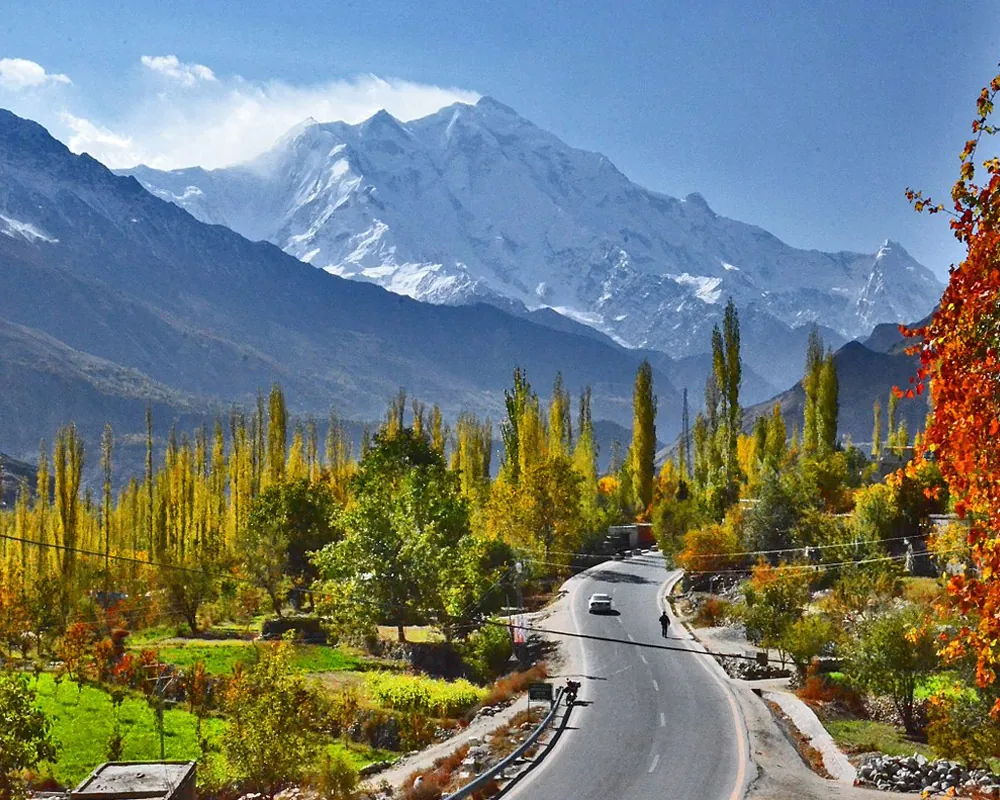
Nestled in the Gilgit-Baltistan region, Hunza Valley is a breathtaking destination that offers a mix of natural beauty and rich culture. You’ll find picturesque landscapes, snow-capped mountains, and charming villages, making it an ideal spot for adventurers and nature enthusiasts.
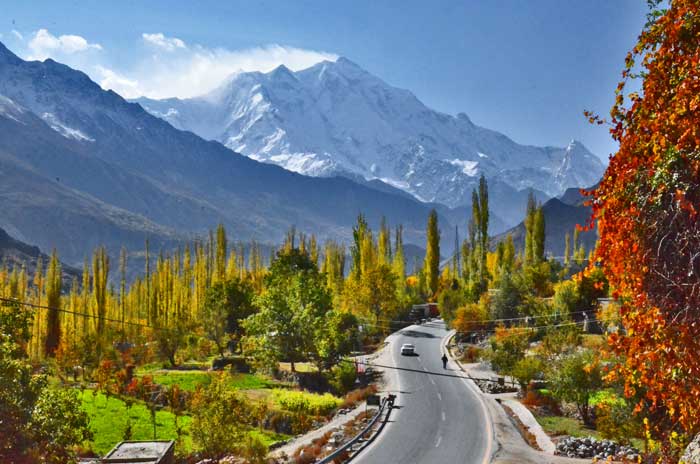
Passu Cones
Passu Cones, also known as Passu Cathedral, are unique geological formations in Hunza Valley. These towering rock structures, formed by erosion, stand out as a striking feature in the world. The cones are a popular spot for photographers. The surreal world will captivate those seeking extraordinary sights.
Attabad Lake
Attabad Lake, located in Hunza Valley, is a stunning turquoise lake formed in 2010 after a landslide. The lake’s vibrant blue waters are surrounded by rugged mountains. Boating and kayaking are popular activities here, allowing you to fully appreciate the lake’s beauty. It’s a perfect place to relax and take in the serene environment.
Eagle’s Nest
Eagle’s Nest offers one of the best panoramic views in Hunza Valley. At an altitude of 2,850 meters, you can see a 360-degree view of the surrounding peaks including Hunza Peak, Ultar Sar, and Ladyfinger Peak. The spot is ideal for sunrise and sunset views, providing a tranquil experience for visitors.
Overview
Location: Gilgit-Baltistan region
Climate: Continental climate with summer temperatures ranging from 14°C to 31°C, while winter temps can drop below 0°C
Best time to visit: April to October for pleasant weather
Top Attractions
- Baltit Fort
- Rakaposhi View Point
- Karimabad Bazaar
Hidden Gems
- Altit Fort, a historical site showcasing local heritage
- Khunjerab Pass, the highest paved international border crossing
- Hopper Glacier, a less-visited natural wonder
Accommodations
| Accommodation | Type | Price Range (USD) | Location | Amenities |
|---|---|---|---|---|
| Luxus Hunza | Hotel | 80-120 | Attabad Lake | Lake view, Restaurant, Wi-Fi |
| Serena Inn | Hotel | 100-150 | Karimabad | Mountain view, Breakfast, Wi-Fi |
| Elysium Hunza Resort | Guesthouse | 50-90 | Duikar | Panoramic view, Terrace, Wi-Fi |
Dining Highlights
- Cafe de Hunza: Known for its walnut cake and coffee
- Hunza Cuisine: Offers traditional dishes like Hunza bread and apricot juice
- Hidden Paradise Restaurant: Serves organic and locally sourced foods
Transportation & Practical Tips
- Getting There: Flights to Gilgit airport, followed by a 2-hour drive to Hunza
- Local Transport: Taxis and jeeps are common; renting a car is also an option
- Practical Tips: Carry warm clothes, even in summer, due to temperature variations
Conclusion with Call-to-Action
Explore Hunza Valley’s stunning landscapes and rich culture on your next trip. Marvel at the unique Passu Cones, relax by the serene Attabad Lake, and enjoy the panoramic views from Eagle’s Nest. Discover the hidden gems and vibrant local culture, making this destination a must-visit on your travel list.
Yarkhun Valley
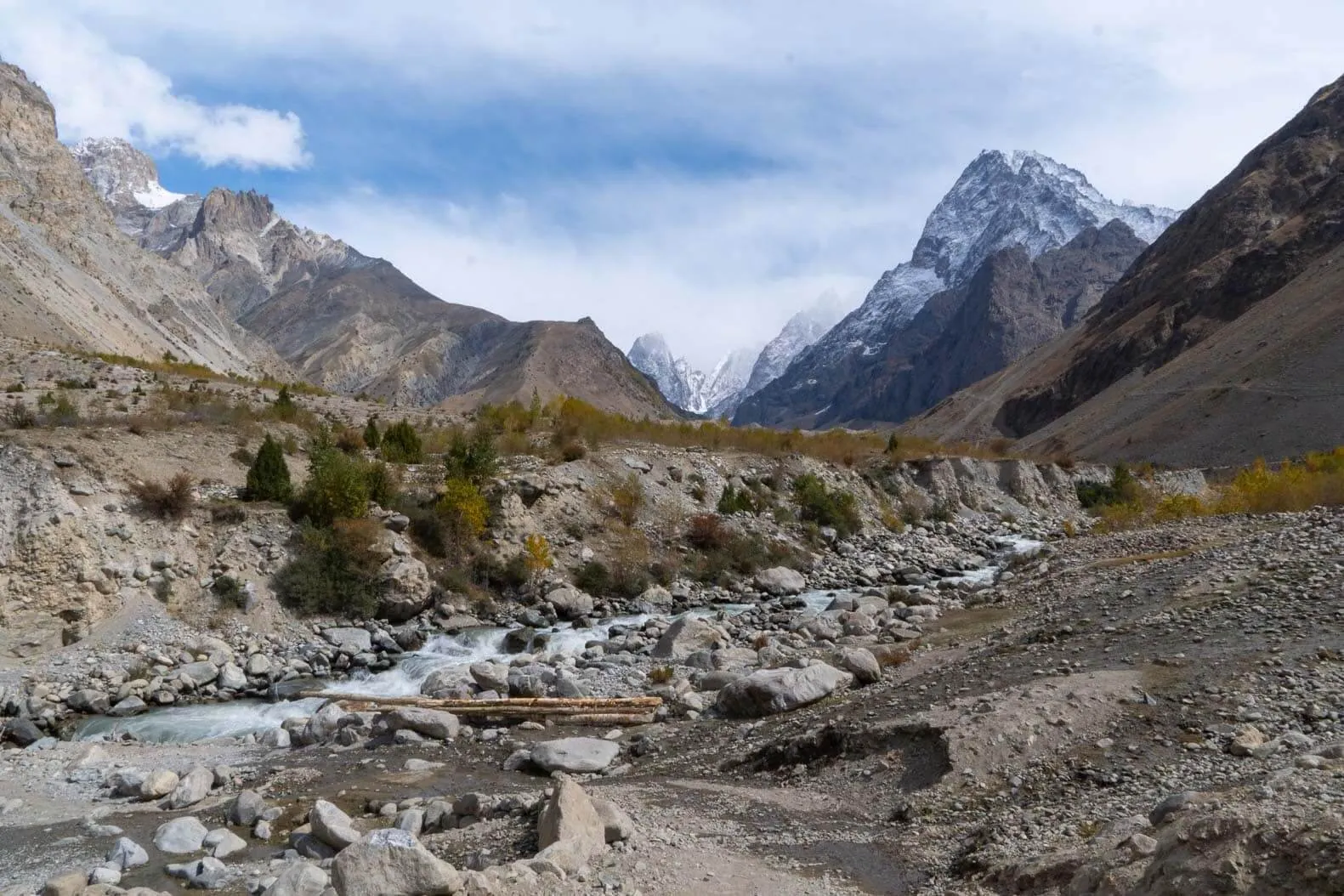
Nestled in the heart of the Hindu Kush mountains, Yarkhun Valley captivates with its untouched beauty and serene landscapes. Located in Chitral District, the valley offers travelers a glimpse into Pakistan’s natural and cultural riches.
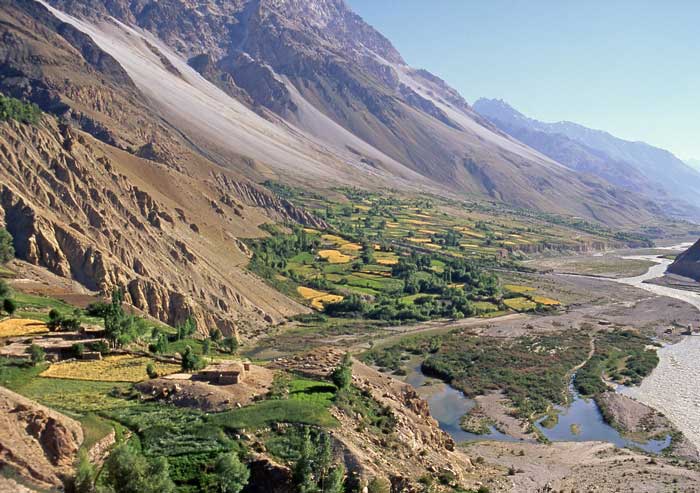
Overview
Yarkhun Valley boasts breathtaking vistas year-round. Summers bring lush meadows and pleasant weather, while winters transform the world into a snowy wonderland. The optimal time to visit is from May to September when the climate is mild and the valley is most accessible.
Top Attractions
- Shandur Pass: Known as the “Roof of the World,” it hosts the annual Shandur Polo Festival.
- Broghil Valley: Features stunning lakes and is part of the Broghil National Park.
- Darkot Pass: Offers challenging trails for trekking enthusiasts, connecting Chitral to Gilgit-Baltistan.
- Yarkhun Lasht: The valley’s highest settlement, offering panoramic views and a peek into local life.
Hidden Gems
- Chhatibo Glacier: Lesser-known but worth the trek for its pristine beauty.
- Chillinji Pass: Adventurous route providing spectacular mountain views.
- Karambar Lake: High-altitude lake offering tranquility and stunning reflections.
Accommodations
| Name | Type | Price Range (USD) | Key Features |
|---|---|---|---|
| PTDC Motel | Budget | 20-50 | Basic amenities, great location |
| Hindukush Heights | Mid-range | 50-100 | Comfortable rooms, excellent views |
| Pamir Riverside Inn | Luxury | 100-200 | Exclusivity, premium facilities, scenic river views |
Dining Highlights
Local cuisine in Yarkhun Valley revolves around fresh produce and traditional recipes. Sample Khowar bread, a simple yet delicious staple, and don’t miss the Chitrali cheese, known for its unique flavor. Enjoy meals prepared with locally sourced ingredients, reflecting the valley’s agricultural heritage.
Transportation & Practical Tips
To reach Yarkhun Valley, you can fly into Chitral Airport and then take a jeep or a 4×4 vehicle. The roads can be challenging, so hiring an experienced driver is recommended. Pack light and bring layers to adjust to the valley’s varying temperatures. Respect local customs and leave no trace to help preserve the natural environment.
Sustainability Tips
Consider eco-friendly accommodations and support local businesses to contribute to the valley’s economy. Carry reusable water bottles and avoid plastic usage to reduce waste in this pristine area. Engaging in community-based tourism provides a richer experience and helps sustain local cultures.
Budget Considerations
Traveling in Yarkhun Valley can be budget-friendly if you opt for local guesthouses and simple transport options. But, if you seek more comfort, mid-range and luxury accommodations offer better amenities. Dining at local eateries ensures both authenticity and cost-effectiveness.
Yarkhun Valley, with its captivating beauty and cultural depth, promises an unforgettable adventure. Whether you’re trekking through mountain passes, savoring local delicacies, or simply soaking in the views, this hidden gem of Pakistan is a must-visit.
Phander Lake
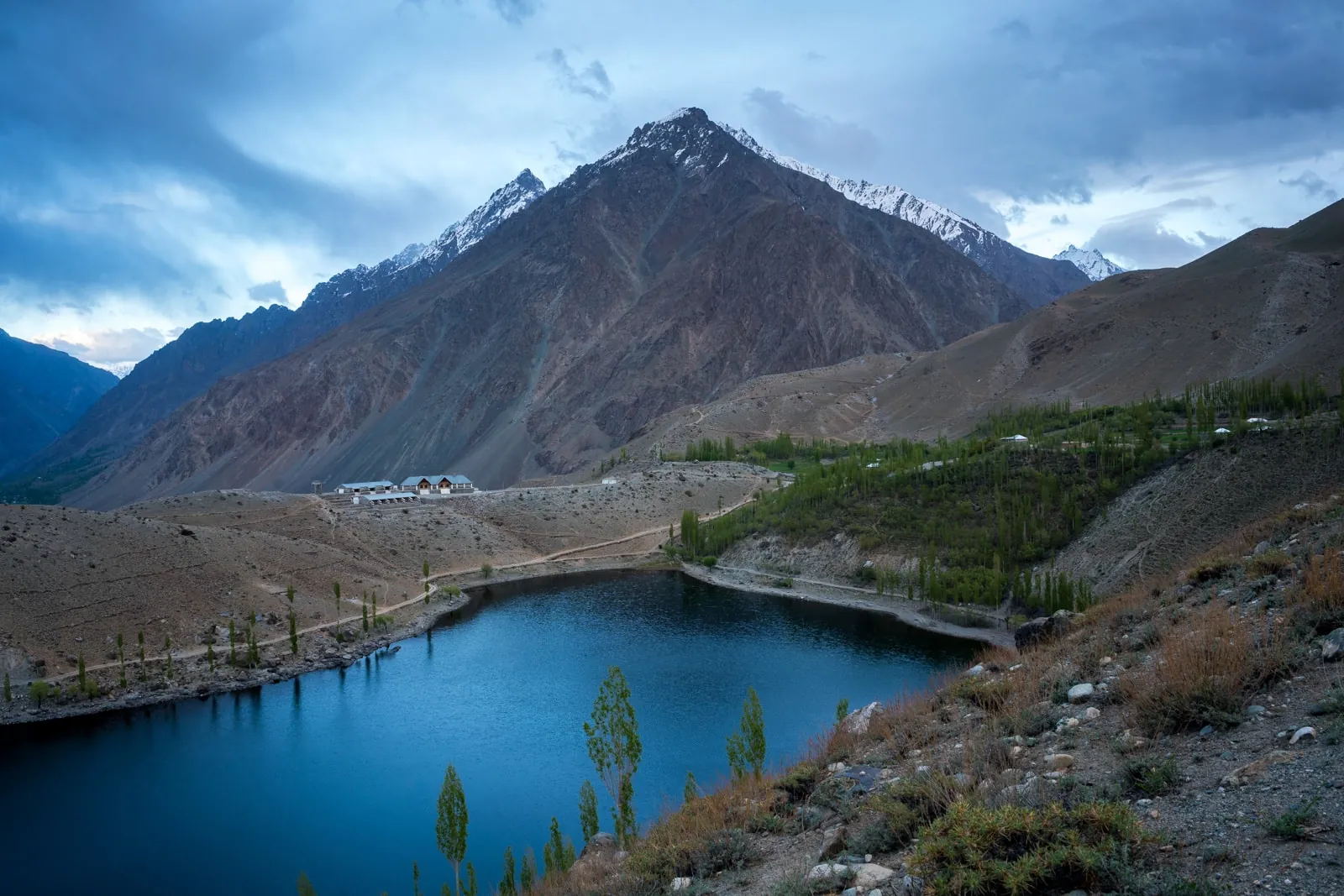
Nestled in the Ghizer District of Gilgit-Baltistan, Phander Lake is a serene escape renowned for its turquoise waters and lush surroundings. The clear lake, surrounded by dense forests and meadows, offers an idyllic retreat for nature enthusiasts. With mild summers and cool winters, the best time to visit is from May to October.
Top Attractions
- Phander Valley: Surrounded by verdant meadows and towering peaks, this valley offers breathtaking views and numerous hiking trails.
- Khalti Lake: Just a short drive from Phander, this equally picturesque lake is perfect for a scenic day trip.
- Local Villages: Explore the charming villages around Phander Lake, where you can interact with locals and experience traditional Gilgit-Baltistan culture.
Hidden Gems
- Shandur Pass: Known as the “Roof of the World,” it hosts the highest polo ground globally and offers stunning views of the surrounding world.
- Scenic Hikes: Various trails around the lake provide solitude and a chance to immerse yourself in the natural beauty.
Accommodations
| Accommodation Type | Examples | Price Range (Per Night) |
|---|---|---|
| Budget Guesthouses | PTDC Motel Phander, Local Inns | $20 – $40 |
| Mid-Range Hotels | Phander Rest House | $50 – $70 |
| Luxury Stays | Private Lodges | $80 – $120 |
Dining Highlights
Dining options around Phander Lake focus on fresh, local produce. Enjoy traditional Gilgit-Baltistan dishes like Chapshuro (a meat-filled bread) and local trout prepared in various styles. Experience home-cooked meals in village guesthouses for an authentic culinary experience.
- Getting There: From Gilgit, a 5-hour drive via the Shandur-Gilgit Road reaches Phander. Rental cars and local buses are available.
- Best Season: Visit between May and October when the weather is pleasant, allowing for outdoor activities.
- Sustainability Tips: Carry reusable water bottles and avoid plastic waste. Respect local customs and contribute to the local economy by buying from village artisans.
- Budget Considerations: Plan your trip by comparing accommodation and transportation options to find the best deals. Taking local buses can reduce travel costs significantly.
By immersing yourself in the tranquility of Phander Lake, you’ll experience a unique blend of natural beauty and cultural heritage, making it an essential stop on any adventure through Pakistan.
Broghil Valley
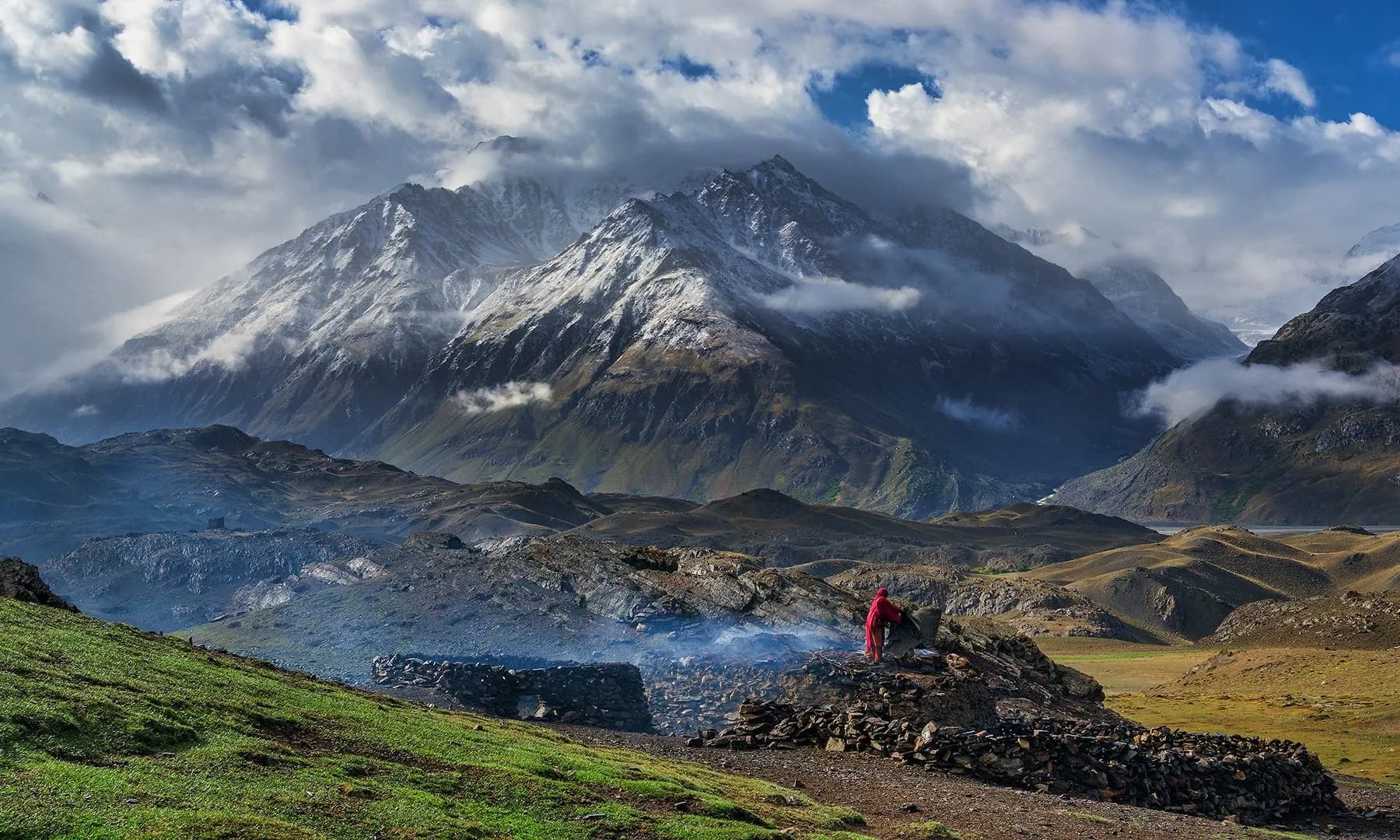
Broghil Valley is a hidden gem located in the Chitral District, within the Hindu Kush mountain range. Its remote setting offers breathtaking vistas, with untouched natural beauty. Visiting Broghil Valley is an adventure in itself, especially appealing to nature lovers and adventure seekers.
Overview
Broghil Valley sits at an altitude of roughly 3,800 meters, making it one of Pakistan’s highest valleys. It experiences harsh winters with heavy snowfall, while summers are mild and pleasant. The best time to visit is from June to September, when the snow has melted and the landscapes are lush and green.
Top Attractions
- Broghil Pass: This high-altitude pass connects Pakistan with the Wakhan Corridor in Afghanistan. Stunning views and the sense of crossing into remote terrain characterize this trek.
- Karambar Lake: Known for its clear blue waters, it’s one of the highest alpine lakes in the world. It’s accessible via a challenging yet rewarding trek.
- Chilinji Pass: Another high-altitude pass offering rugged, spectacular landscapes. It joins the Yasin Valley with Broghil Valley.
Hidden Gems
- Warwak Glacier: A less-visited spot perfect for those who seek solitude and raw natural beauty.
- Kurumbar Village: A small settlement that provides a glimpse into the traditional lifestyle of the valley’s inhabitants.
Accommodations
| Accommodation Name | Type | Price Range (USD) | Features |
|---|---|---|---|
| Broghil Guest House | Guest House | $20 – $50 | Basic amenities, local cuisine |
| Camping Sites | Tents | $10 – $30 | Close to nature, DIY options |
| Lakefront Lodge | Lodge | $50 – $100 | Lakeside views, modern comforts |
Dining Highlights
Local cuisine in Broghil Valley includes traditional dishes made from fresh and organic ingredients. Try the local variations of Chapli Kebab and Dumba Karahi. The valley’s hospitality ensures you’ll enjoy meals that are both hearty and authentic.
Transportation & Practical Tips
Getting to Broghil Valley requires careful planning. The most common route is via Chitral, from where you can hire a jeep or arrange for a local guide. Note that even during the best months, the journey involves rough terrains.
- Pack essentials for cold weather even in summer.
- Respect local customs and traditions.
- Practice eco-friendly travel by minimizing waste and using sustainable products.
Conclusion
Broghil Valley encapsulates raw beauty and adventure. Its unspoiled landscapes and cultural richness make it a must-visit for those willing to go off the beaten path.
Lahore
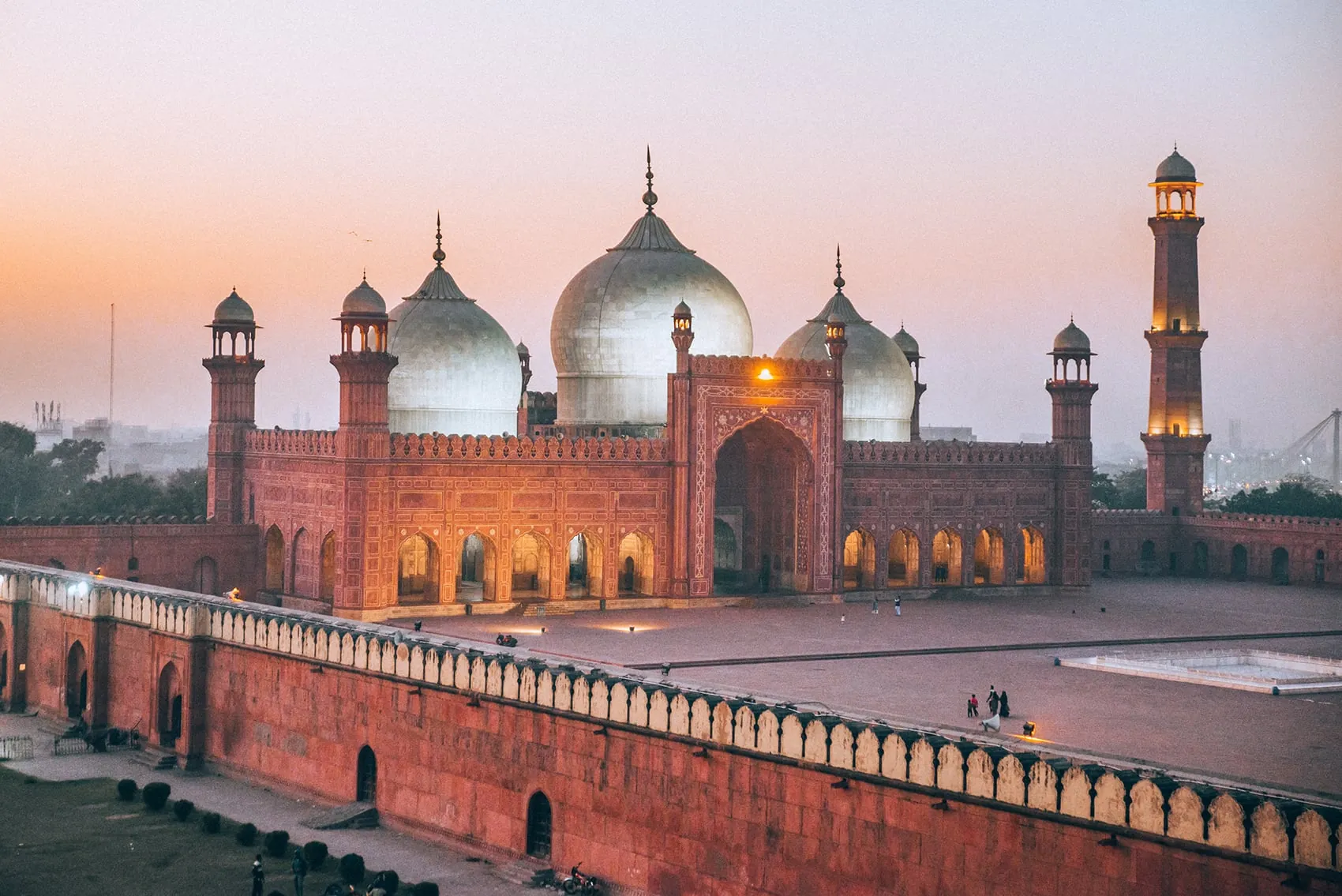
Known as the “Cultural Capital” of Pakistan, Lahore is a city brimming with historical sites, vibrant culture, and an undeniable charm. Lahore offers a blend of ancient and modern attractions that make it a must-visit destination.
Top Attractions
- Badshahi Mosque: This Mughal-era mosque is renowned for its grand architecture. Visitors often admire its intricate carvings and vast courtyard.
- Lahore Fort (Shahi Qila): A UNESCO World Heritage Site, Lahore Fort showcases a blend of Mughal, Sikh, and British architectural styles. Don’t miss Sheesh Mahal (Palace of Mirrors) located within the fort.
- Minar-e-Pakistan: This landmark commemorates the Pakistan Resolution of 1940. It stands as a symbol of the country’s independence.
- Lahore Museum: Jump into the region’s history and culture through its extensive collection of artifacts, including Gandhara sculptures and Mughal relics.
Hidden Gems
- Carry Singh Haveli: A lesser-known, but stunning, example of Sikh architecture. Its detailed frescoes offer a peek into the region’s past.
- Delhi Gate: One of the original 13 gates of the Walled City. Explore narrow streets bustling with local life and history.
- Shalimar Gardens: While not hidden, this Mughal garden offers a quieter escape compared to the crowded main attractions, with terraced lawns and ornamental pools.
Accommodations
| Accommodation | Type | Price Range (per night) | Features |
|---|---|---|---|
| Pearl Continental | Hotel | $150 – $300 | Luxurious amenities, central location, dining options |
| Faletti’s Hotel | Heritage | $100 – $200 | Historical building, traditional décor, close to major attractions |
| Backpackers Hostel | Budget | $10 – $30 | Cost-effective, communal spaces, ideal for young travelers and solo adventurers |
Dining Highlights
- Food Street at Gawalmandi: Sample local favorites like Nihari and Halwa Puri. Street vendors offer a variety of traditional dishes.
- Café Zouk: For a modern dining experience, try Café Zouk. Their extensive menu caters to various palates.
- Cooco’s Den: Located near Badshahi Mosque, this restaurant offers traditional Lahori cuisine with a view.
Transportation & Practical Tips
- Transportation: Lahore’s public transport includes buses and rickshaws. For a more comfortable ride, consider using ride-hailing apps like Careem and Uber.
- Best Time to Visit: October to March, when temperatures are moderate and outdoor exploration is pleasant.
- Sustainability Tips: Opt for public transportation or walk to reduce carbon footprint. Support local businesses to encourage cultural preservation.
- Budget Considerations: Lahore offers a range of budget options, from street food to hostels. Plan accordingly to experience the city’s wonders without overspending.
| Month | Average High (°F) | Average Low (°F) |
|---|---|---|
| October | 86 | 61 |
| November | 77 | 52 |
| December | 66 | 45 |
| January | 65 | 42 |
| February | 71 | 47 |
| March | 81 | 54 |
Explore Lahore’s rich historical sites, savor its culinary delights, and immerse yourself in the vibrant culture.
Hingol National Park
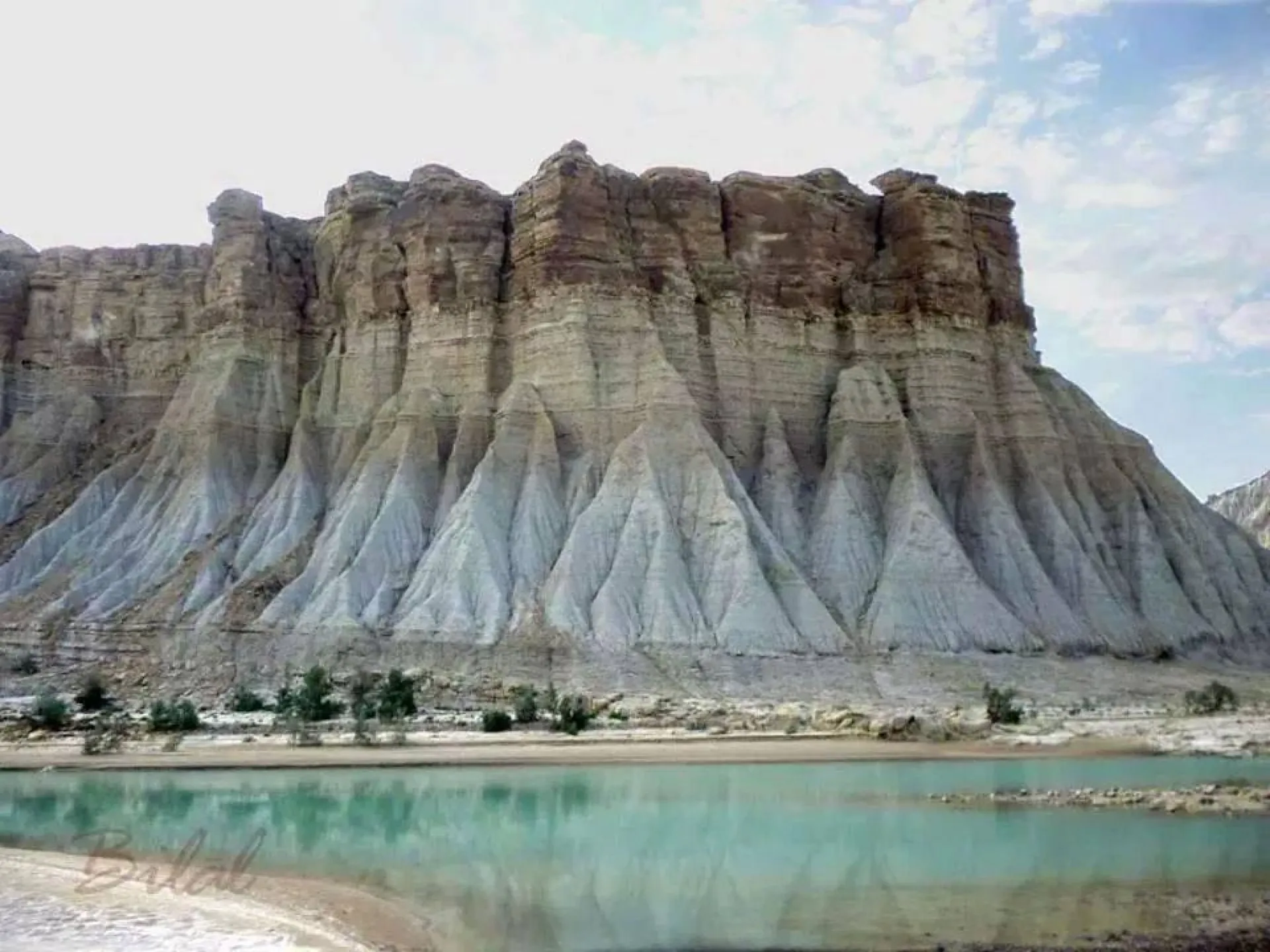
Discover Hingol National Park’s unique blend of natural beauty and historical significance. Situated in the Balochistan province, this is Pakistan’s largest national park, covering 6,100 square kilometers. The park showcases diverse landscapes, from dramatic canyons to sandy beaches, and a rich array of flora and fauna. The arid climate brings hot summers, while winter offers a mild and pleasant escape, making October to March the best visiting months.
Top Attractions
- Hingol Mud Volcanoes: Active mud volcanoes that constantly spew mud, creating fascinating and ever-changing landscapes.
- Princess of Hope: A naturally sculpted rock formation resembling a princess looking out into the horizon.
- Hingol River: A lifeline for the park, supporting various wildlife and offering scenic spots for photography.
- Kund Malir Beach: Pristine sandy beach bordered by majestic mountains, perfect for a serene getaway.
- Hinglaj Mata Temple: An ancient pilgrimage site, highly revered in Hindu tradition, accessible after a scenic trek.
Hidden Gems
- Golden Sand Dunes: Vast, rolling dunes offering both beauty and adventure for those willing to explore off the beaten path.
- Sphinx of Balochistan: A natural rock formation resembling the Great Sphinx of Giza, yet lesser-known and less visited.
- Nani Mandir: An ancient Hindu temple nestled within Hingol’s rugged terrain, offering both spiritual and historical insights.
Accommodations
| Accommodation | Type | Features | Price Range |
|---|---|---|---|
| Hingol Rest House | Guesthouse | Basic amenities, near primary attractions | $20-$40 per night |
| Kund Malir Camping | Tent | Beachfront, guided tours available | $15-$25 per night |
| Coastal Resort Gwadar | Hotel | Luxurious, scenic sea views | $100-$150 per night |
Dining Highlights
- Local Seafood Stalls: Freshly caught seafood prepared in traditional Balochi style, available along Kund Malir Beach.
- Dhaba Restaurants: Small local eateries offering authentic Balochi dishes such as Sajji (roast lamb) and Kaak (Balochi bread).
- Gwadar Hotels: Fine dining options in Gwadar that provide a mix of local and international cuisines.
Transportation & Practical Tips
- Getting There: Access Hingol National Park via the Makran Coastal Highway from Karachi, approximately a 3-hour drive.
- Best Time to Visit: Plan your visit between October and March to avoid the extreme summer heat.
- What to Pack: Lightweight clothing for daytime, warmer layers for evenings, reusable water bottle, sunscreen, hiking gear.
- Sustainability Tips: Respect wildlife, carry out all trash, avoid single-use plastics, and consider eco-friendly travel options.
Call-to-Action
Immerse yourself in the diverse landscapes and cultural history of Hingol National Park. Whether you’re drawn by the unique geological formations or the ancient temples, this park promises an unforgettable adventure. Plan your trip today and embrace the natural wonders and serene beauty that Hingol has to offer.
Kalash Valleys
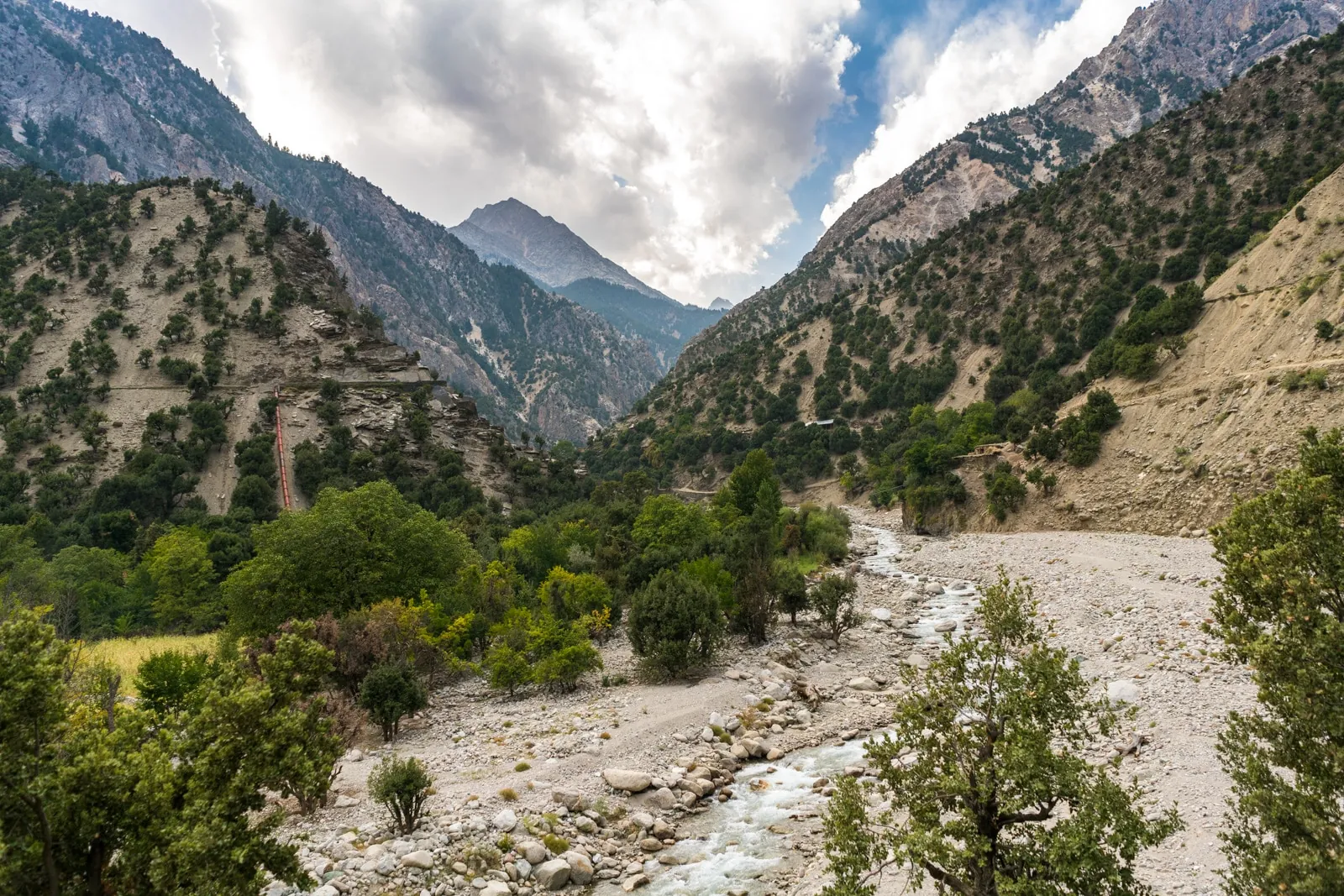
Captivating Intro
Nestled in the remote mountains of Khyber Pakhtunkhwa, the Kalash Valleys offer a unique and enchanting escape. The valleys are home to the Kalash people, a distinct ethnic group with their own religion, culture, and language. Visiting the Kalash Valleys is like stepping into a different world, where vibrant festivals, ancient traditions, and stunning landscapes await.
Brief Overview
Kalash Valleys consist of three main valleys: Bumburet, Rumbur, and Birir. The area enjoys a moderate climate, with warm summers and cold winters. The best time to visit is from May to September, when the weather is pleasant and the valleys are lush and green.
Top Attractions
- Bumburet Valley: The largest and most developed of the three valleys, Bumburet is known for its picturesque beauty and cultural richness. Visit the Kalash Museum to learn about the history and traditions of the Kalash people.
- Rumbur Valley: Less commercialized and more serene, Rumbur offers opportunities for hiking and immersing yourself in the local lifestyle. Don’t miss the Joshi festival in mid-May, celebrating the arrival of spring with singing, dancing, and rituals.
- Birir Valley: The smallest and least visited of the three, Birir is perfect for those seeking tranquility and an authentic experience. Explore traditional Kalash homes and interact with the warm and hospitable locals.
Hidden Gems
- Kalash Dur Museum: Located in Bumburet Valley, this museum showcases artifacts, traditional clothing, and tools used by the Kalash people.
- Garam Chashma: A hot spring located near the Kalash Valleys, offering a relaxing experience surrounded by nature.
- Karakar Pass: The pass connecting the Kalash Valleys to the rest of Chitral, providing stunning panoramic views of the surrounding mountains.
Accommodations
| Accommodation | Location | Type | Price Range (per night) | Amenities |
|---|---|---|---|---|
| Kalash Guest House | Bumburet Valley | Guesthouse | $30 – $50 | Free Wi-Fi, Breakfast, Cultural Tours |
| Rumbur Inn | Rumbur Valley | Hotel | $40 – $60 | Restaurant, Hiking Tours, Scenic Views |
| Birir Lodge | Birir Valley | Lodge | $25 – $45 | Traditional Meals, Local Guides |
Dining Highlights
- Traditional Kalash Cuisine: Enjoy dishes like ‘Sajji’ (roasted meat) and ‘Chewdu’ (a rice dish with dried vegetables). Local dairy products like yogurt and cheese are also a must-try.
- Local Festivals: During festivals like Joshi, partake in feasts featuring homemade bread, lamb, and seasonal fruits.
- Getting There: Fly to Chitral from Islamabad and then take a Pre-booked taxi to the Kalash Valleys. The journey takes around 3-4 hours.
- Practical Advice: Pack comfortable hiking shoes and culturally appropriate clothing. Respect local customs and traditions. Carry cash, as ATMs are scarce.
- Sustainability Tips: Minimize plastic use, support local businesses, and opt for eco-friendly accommodations.
Visitors to the Kalash Valleys will be rewarded with a rich cultural experience and breathtaking natural beauty. Explore the valleys, learn about the unique Kalash culture, and make unforgettable memories in this hidden gem of Pakistan.
Deosai Plains National Park
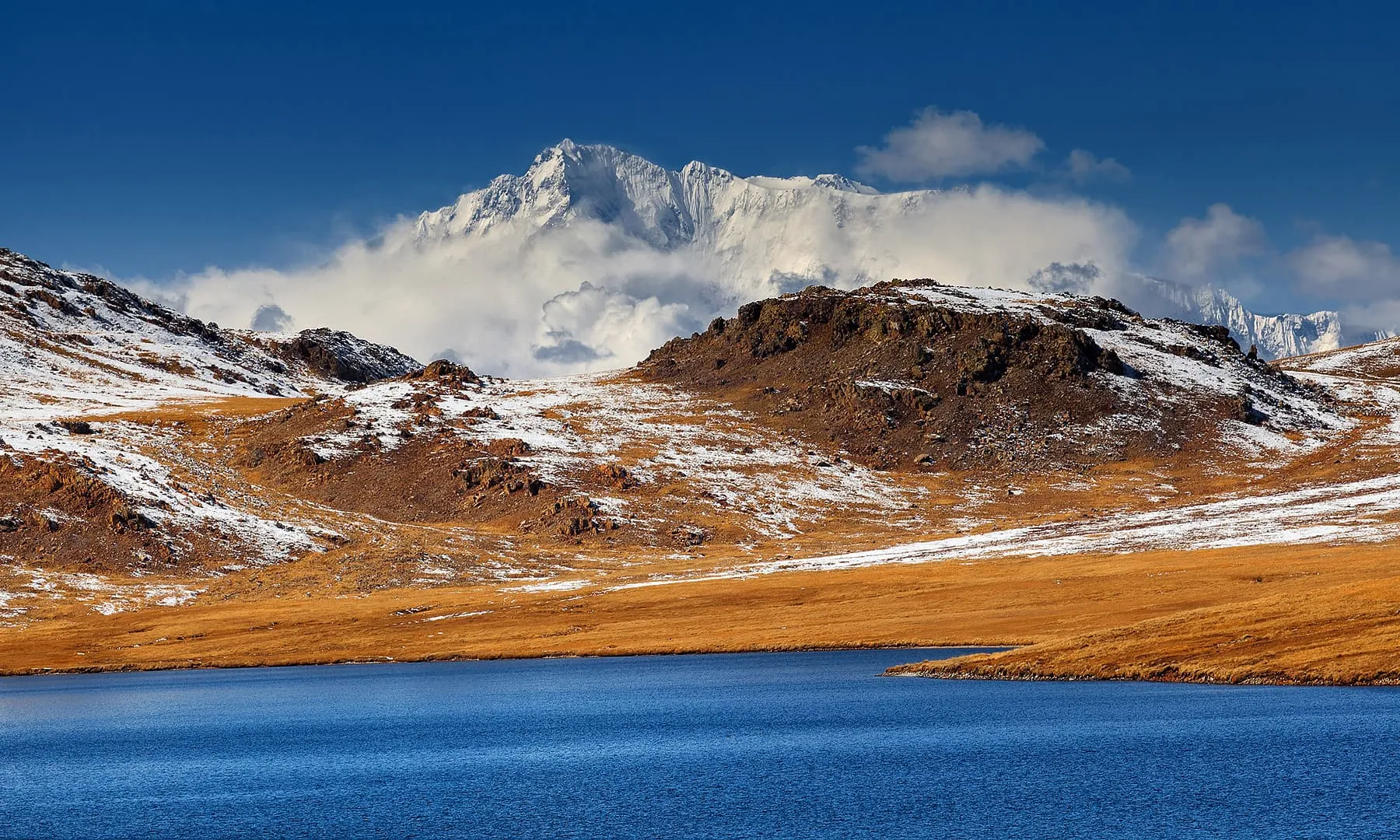
Deosai Plains National Park, known as the “Land of Giants,” is one of Pakistan’s most stunning natural wonders. Located in the Skardu District of Gilgit-Baltistan, this high-altitude alpine plain offers unparalleled beauty, diverse wildlife, and a serene environment.
Overview
Situated at an average height of 13,497 feet (4,114 meters), Deosai spans over 3,000 square kilometers, making it one of the world’s highest plateaus. The park’s climate is harsh, with long winters and brief summers. The best time to visit is from June to September, when the snow melts, revealing vibrant flora and fauna.
Top Attractions
- Sheosar Lake: Known for its crystal-clear waters and panoramic views of snow-capped peaks.
- Kala Pani Stream: Offers beautiful landscapes and opportunities for trout fishing.
- Bara Pani: A large riverside area perfect for camping and picnicking.
- Wildlife Viewing: Spot Himalayan brown bears, ibexes, red foxes, and a variety of birds.
Hidden Gems
- Deosai Top: Provides breathtaking 360-degree views of the plains.
- Deosai Bala: Lesser-known area ideal for solitude and star gazing.
- Chota Pani: Smaller stream offering secluded picnic spots.
Accommodations
| Type | Options | Price Range (per night) | Amenities |
|---|---|---|---|
| Camping | Designated camping sites | Free to $20 | Natural setting, basic facilities |
| Guesthouses | Shigar, Skardu | $30 – $100 | Heating, meals, guided tours |
| Luxury | Serena Shigar Fort, Shangrila Resort | $150 – $300 | All modern amenities, scenic views |
Dining Highlights
Deosai is mostly known for its natural beauty rather than cuisine. Most visitors rely on campsites and nearby guesthouses for meals. Traditional dishes include:
- Chapshuro: A local pastry filled with minced meat and spices.
- Trout Fish: Freshly caught from the streams.
- Yak Meat Delicacies: Available in some guesthouses.
- Getting There: Access Deosai via Skardu. From Skardu, you can hire a 4×4 vehicle for a rugged ride into the park.
- Packing Essentials: Warm clothing, sturdy boots, camping gear, and sunscreen.
- Sustainability Practices: Carry reusable bags, minimize waste, and respect wildlife habitats.
- Budgeting: Plan your trip in advance, book accommodations early, and consider group travel to share costs.
Deosai Plains National Park offers a uniquely serene experience with its vast landscapes and rich biodiversity, making it an essential destination for nature lovers and adventure seekers.
Gorakh Hills
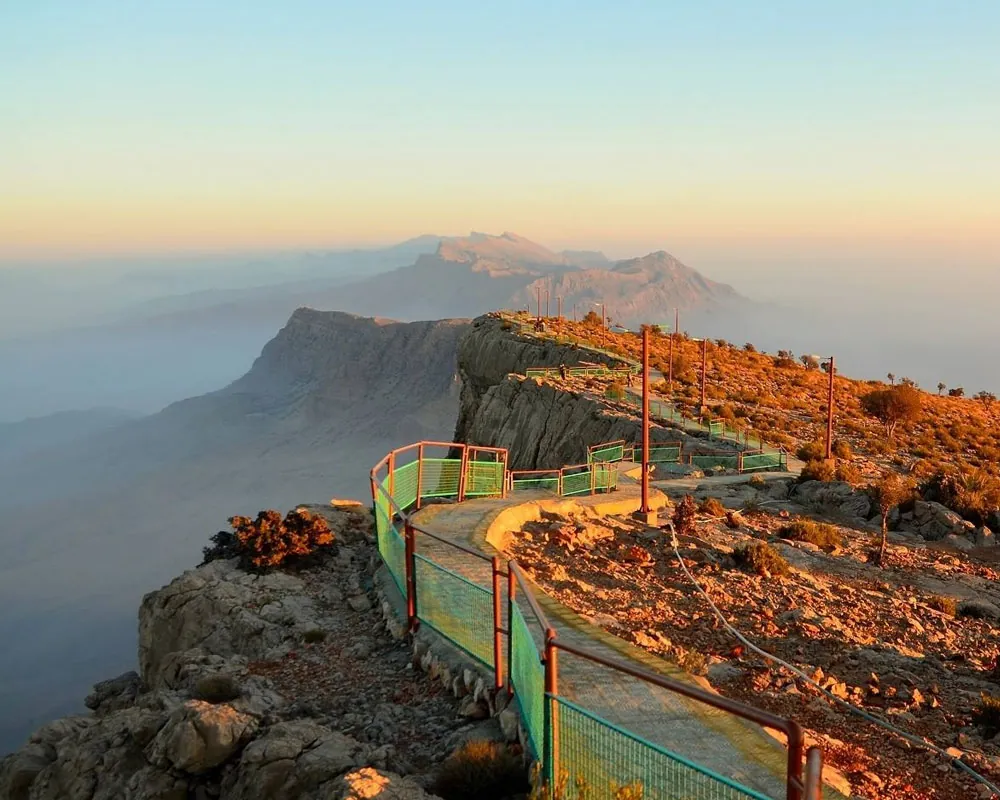
Perched on the Kirthar Mountain Range in Sindh, Gorakh Hills offers an escape into a cooler climate, rare in the otherwise arid region. If you visit, you’ll find temperatures ranging from pleasantly cool to freezing in winter, contrasting sharply with Sindh’s typical heat. The best time to visit is between October and March to experience the pleasant weather and clear skies.
Top Attractions
- Benazir View Point: Offers panoramic views of the Gorakh Hills and surrounding world.
- Sunset Point: Perfect for capturing stunning sunsets illuminating the rugged terrain.
- Gorakh Hill Station: The highest point, providing sweeping vistas and cooler temperatures.
Hidden Gems
- Dilshad View Point: Less crowded than other spots, it’s ideal for quiet reflection.
- Local Waterfalls: Seasonal waterfalls become active after rains, offering scenic beauty in an unexpected setting.
- Traditional Sindhi Villages: Nearby villages give a glimpse into local culture and lifestyle.
Accommodations
| Accommodation Type | Amenities | Price Range (per night) |
|---|---|---|
| Guesthouses | Basic amenities, local cuisine | $20 – $40 |
| Cottages | Enhanced comfort, private bathrooms | $50 – $80 |
| Camping Sites | Tents, basic facilities | $10 – $20 |
Dining Highlights
- Local Cuisine: Enjoy traditional Sindhi dishes like Saag (spinach curry) and Sindhi Biryani.
- Barbecue Spots: Many accommodations offer barbecue facilities, letting you enjoy grilled meals under the stars.
- Tea Stalls: Scattered around the hill station, these stalls serve traditional chai and snacks.
- How to Get There: The nearest major city is Dadu, from where local jeeps can take you to Gorakh Hills. It’s advisable to book in advance for convenience.
- Best Time to Visit: October to March is ideal for pleasant weather and clear views.
- Packing Essentials: Warm clothing, especially if visiting in winter, and comfortable shoes.
- Eco-Friendly Practices: Minimize waste by carrying reusable water bottles and bags. Respect local flora and fauna.
- Budget Considerations: Plan according to your desired accommodation type to manage expenses effectively. Opt for guesthouses or camping for budget-friendly choices.
Experience the unique charm of Gorakh Hills, from its breathtaking viewpoints to hidden cultural treasures, offering a distinct contrast to the arid landscapes of Sindh.
Shimshal
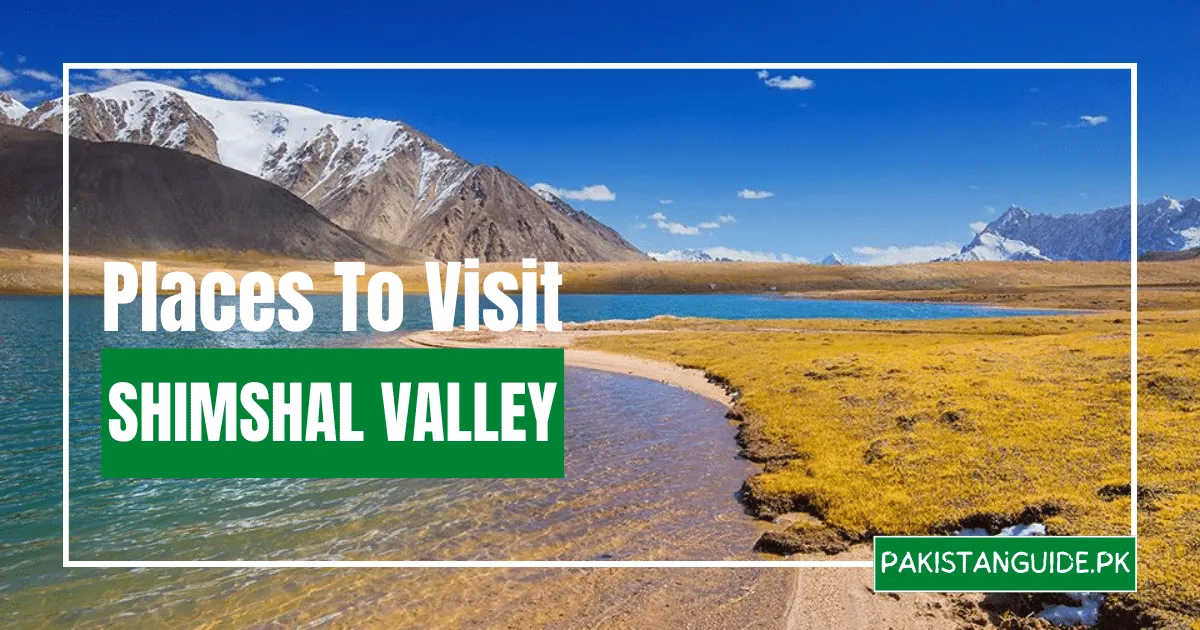
Perched in the Gilgit-Baltistan region, Shimshal is a village that epitomizes remote beauty. Known for its rugged terrain and warm hospitality, Shimshal offers a unique blend of adventure and serenity. The best time to visit is from May to October when the weather is most favorable for trekking and exploring.
Top Attractions
- Shimshal Pass: Offers panoramic views of snow-capped peaks.
- Minglik Sar: A popular destination for mountaineers.
- Shimshal Lake: A serene spot perfect for picnics and relaxation.
Hidden Gems
- Yak Safaris: Experience traditional lifestyles by riding yaks through the valleys.
- Shimshal River Adventures: Ideal for those looking to fish or enjoy the tranquil water.
- Local Villages: Engage with the hospitable residents and learn about their unique culture.
Accommodations
| Type | Options | Price Range (USD) | Amenities |
|---|---|---|---|
| Guesthouses | Shimshal Mountain Lodge, Pamir Serai | $20 – $60 | Basic amenities, local cuisine |
| Homestays | Various local families offer homestay experiences | $15 – $30 | Cultural immersion, homemade meals |
| Camping Sites | Designated areas around Shimshal Lake and Shimshal Pass | $5 – $20 | Basic facilities, stunning views |
Dining Highlights
- Local Cuisine: Try traditional dishes like Chapshuro, Momos, and freshly baked bread.
- Family Meals: Enjoy meals with local families, featuring fresh produce and meats.
- Getting There: Public transport services are limited. Private taxis from Hunza are the most reliable option.
- Best Season: May to October offers the best weather for outdoor activities.
- Packing Essentials: Warm clothing, trekking gear, and basic medical supplies are a must.
- Sustainability: Support local businesses and opt for eco-friendly travel practices to minimize your environmental footprint.
Visiting Shimshal means embracing nature at its rawest and discovering the deep cultural roots of its people. It’s an ideal destination for adventurers and those seeking a genuine connection with nature and local traditions. Jump into an authentic experience where every trail and meal leaves an indelible mark on your journey.
Shah Jahan Mosque

Captivating Intro
Step into the bygone era at Shah Jahan Mosque, a hidden gem exuding Mughal splendor, nestled in the heart of Thatta, Sindh. Discover immersive tales in its art and architecture, inviting you to explore every corner.
Brief Overview
Located in Thatta, this mosque boasts a blend of Persian, Ottoman, and local styles. Built in 1647-49 by Emperor Shah Jahan, it features stunning tile work. Visit during cooler months, from November to March, for the best experience.
Top Attractions
- Intricate Tile Work: Marvel at glazed tiles in vibrant blues, greens, and browns.
- Central Dome: Admire the large dome surrounded by four smaller ones.
- Hypostyle Halls: Wander through 33 uniquely designed domes.
- Arched Corridors: Explore expansive corridors adorned with geometric patterns.
Hidden Gems
- Sunset Views: Experience breathtaking sunsets from the mosque’s rooftop.
- Acoustic Marvel: Appreciate the mosque’s design that amplifies sound with minimal effort.
- Local Art Exhibits: Occasionally, local artisans showcase traditional crafts within the mosque.
Accommodations
| Option | Price Range | Amenities |
|---|---|---|
| Thatta Guest House | $20-$30/night | Basic amenities, Wi-Fi |
| Dreamland Hotel | $40-$60/night | Modern rooms, restaurant, parking |
| High-End Hotel in Karachi | $100-$150/night | Luxury amenities, swimming pool, spa |
Dining Highlights
- Sindhi Biryani: Relish a plate of spicy biryani from local eateries.
- Bhugal Mutton: Savor slow-cooked mutton with Sindhi spices.
- Ladoos: Indulge in traditional sweets from local vendors.
- From Karachi: Travel by bus or hire a private car; it’s a 2-hour journey.
- Attire: Dress modestly to respect local customs.
- Footwear: Remove your shoes before entering the prayer hall.
- Sustainability: Support eco-friendly tourism by minimizing plastic use and opting for local guides.
Engage with Shah Jahan Mosque’s historical richness and experience a living testament to Mughal architectural prowess. Let each tile, arch, and dome inspire your journey through time.
Fairy Meadows
Nestled at the base of Nanga Parbat, the ninth-highest mountain in the world, Fairy Meadows is a celestial paradise for nature enthusiasts and adventure seekers. This ethereal destination, accessible from April to October, is known for its breathtaking views, vibrant wildflowers, and thrilling access route.
Top Attractions
- Nanga Parbat View: One of the most striking features, offering panoramic views of the towering peak.
- Wildflower Meadows: During the warmer months, meadows bloom with vibrant wildflowers, creating a picturesque world.
- Fairy Meadows Village: A quaint village offering rustic charm and a glimpse into local life.
- Trekking Routes: Trails to Beyal Camp and Nanga Parbat Base Camp provide both challenges and stunning scenery.
Hidden Gems
- Reflection Lake: A short hike from the village leads to this serene spot, perfect for photography.
- Raikot Bridge: The starting point of the thrilling Jeep ride, offering awe-inspiring views of the journey ahead.
- Chilam Joshi Festival: If visiting in May, witness this local festival celebrating spring with music, dance, and traditional attire.
Accommodations
| Accommodation | Type | Price Range | Amenities |
|---|---|---|---|
| Fairy Meadows Cottages | Cabin | $30-$50 | Basic, scenic views, close to village |
| Raikot Sarai | Lodge | $20-$40 | Traditional, communal dining, vibrant |
| Camping Sites | Tent | $10-$20 | Adventure experience, rustic facilities |
Dining Highlights
- Local Trout: Freshly caught from the nearby streams and served grilled or fried.
- Chapshoro: Traditional meat-filled bread, a hearty and satisfying meal.
- Yak Butter Tea: A local delicacy that offers a unique taste and warmth, perfect after a long hike.
- Access Route: Start with a Jeep ride from Raikot Bridge, a thrilling journey along a narrow, cliffside road. Follow with a three-hour hike or horse ride to Fairy Meadows.
- Best Time to Visit: April to October for the best weather and clear views.
- Packing Essentials: Warm clothing, sturdy hiking boots, and camping gear if you plan on staying in tents.
- Sustainability Tips: Practice Leave No Trace principles, carry reusable bottles, and support local businesses to minimize environmental impact.
- Budget Considerations: Budget for transportation costs, accommodation rates, and meals within the range mentioned in their respective sections.
Begin on a journey to Fairy Meadows and immerse yourself in the majestic beauty of northern Pakistan. From thrilling treks to serene vistas, this destination offers an unforgettable adventure.
Chapursan Valley
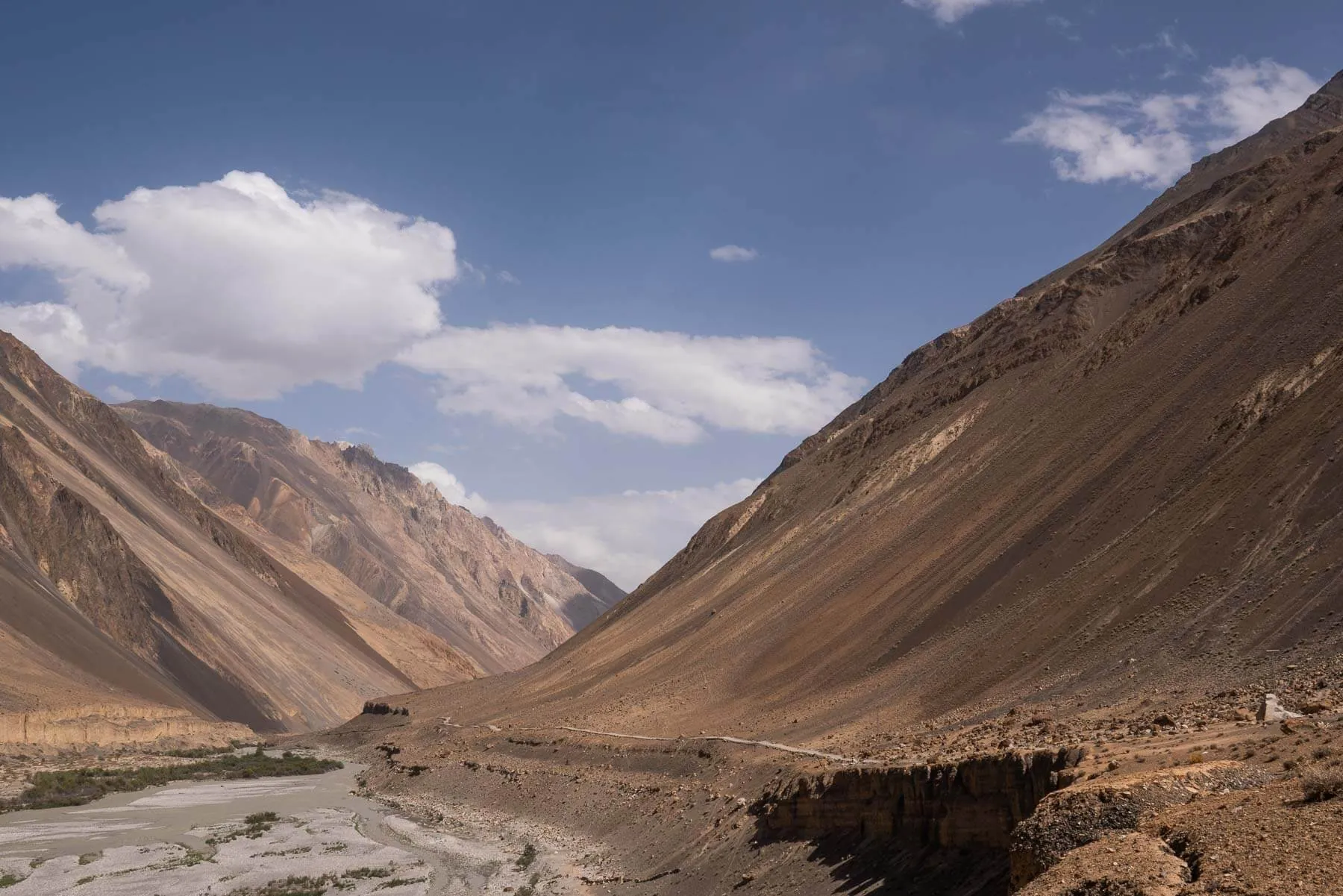
Chapursan Valley, located in Gilgit-Baltistan near the Pakistan-China border, is renowned for its serene environment, rich culture, and breathtaking landscapes. Nestled in the northernmost part of Pakistan, the valley lies against the stunning backdrop of the Pamir Mountains. The best time to visit spans from May to September, when the weather is mild and the scenery is at its best.
Top Attractions
- Baba Ghundi Shrine: A sacred site dedicated to the saint Baba Ghundi, offering both a cultural experience and panoramic views.
- Yashkuk Glacier: Ideal for trekking and photography, presenting pristine ice formations and spectacular vistas.
- Kumrat Sar Lake: This high-altitude lake is perfect for hiking and picnicking, surrounded by dramatic peaks.
- Ziarat: Visit this mystical site known for its serene ambiance and historical significance.
Hidden Gems
- Chilinji Pass: Perfect for adventurous trekkers, offering rugged beauty and lesser-known trails.
- Reshit Valley: A secluded area offering unique flora and fauna, accessible through scenic hikes.
- Saqth Waterfall: A hidden cascade providing a tranquil spot for relaxation and photography.
Accommodations
| Type | Options | Price (per night) | Facilities |
|---|---|---|---|
| Budget | Local Guesthouses | $10-$20 | Basic amenities, local meals |
| Mid-Range | Eco-Friendly Lodges | $30-$50 | Comfortable rooms, Wi-Fi, dining |
| Luxury | Boutique Hotels | $70-$100 | High-end amenities, guided tours |
Dining Highlights
- Traditional Hunza Cuisine: Enjoy hearty dishes like Chapshuro (meat-filled pastry) and Hoilo Garma (spinach and noodles).
- Local Trout: Freshly caught trout prepared with regional spices is a must-try.
- Yak Milk Products: Sample cheese and yogurt made from yak milk for a unique culinary experience.
- Getting There: The best way to reach Chapursan Valley is by road from Gilgit, approximately a 10-hour drive. Renting a 4×4 vehicle is recommended to navigate rugged terrains.
- Packing Essentials: Pack warm clothes, even in summer, due to the valley’s high altitude. Hiking gear and a good camera are also necessary for outdoor activities.
- Sustainability Practices: Support local businesses and eco-friendly lodges to reduce your environmental footprint. Always carry reusable water bottles and avoid single-use plastics.
- Budget Considerations: Chapursan Valley offers a range of accommodations catering to different budgets. Opt for homestays or guesthouses for a cost-effective and culturally immersive experience.
Chapursan Valley, with its diverse attractions and hidden gems, promises an unforgettable experience, whether you’re trekking through glaciers, exploring local shrines, or simply soaking in the natural beauty.
Khunjerab Pass
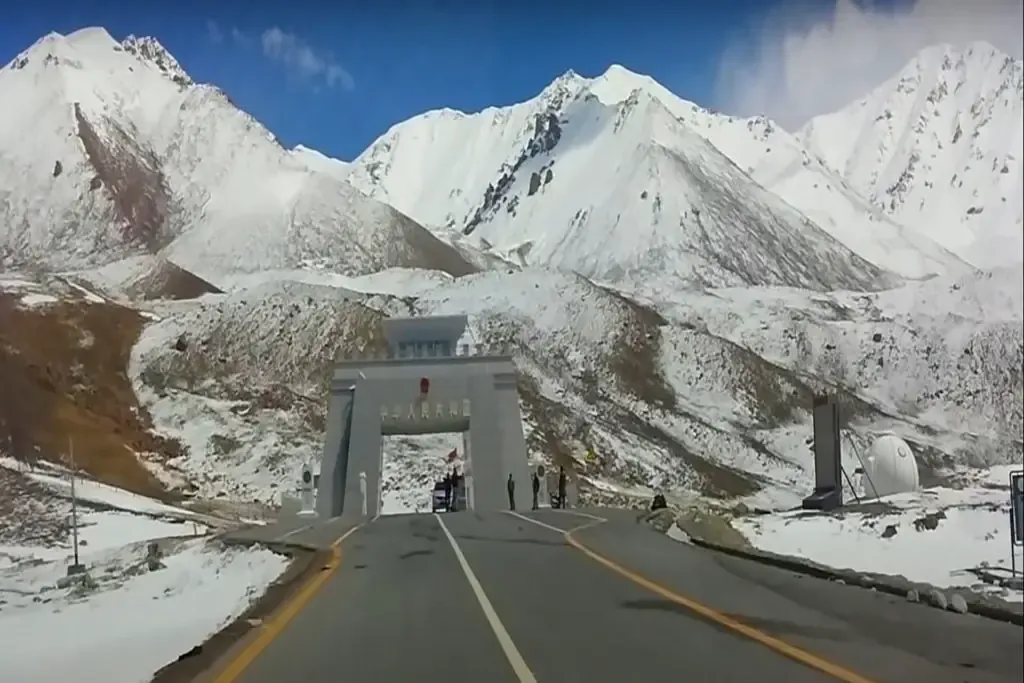
Khunjerab Pass is an awe-inspiring destination nestled in the Karakoram mountain range. This high-altitude pass, at 15,397 feet, connects Pakistan with China, offering one of the world’s highest paved border crossings. The pass’s stark beauty, combined with dramatic panoramic views, makes it a must-visit for adventurous travelers.
Overview
Khunjerab Pass is situated in Gilgit-Baltistan, near the Pakistan-China border. The climate is generally cold year-round, with temperatures often dipping below freezing even in summer. The best time to visit is from May to September when conditions are more favorable for travel.
Top Attractions
- Khunjerab National Park: Home to endangered species such as the Snow Leopard and Himalayan Ibex, this park offers breathtaking natural landscapes and wildlife sightings.
- Border Monument: The iconic marker at the border is a popular photo spot, symbolizing the friendship between Pakistan and China.
- China-Pakistan Friendship Highway: This scenic route offers stunning views of the Karakoram Mountains.
Hidden Gems
- Sost Dry Port: Just before the pass, Sost serves as a key trade center and offers unique local experiences.
- Karakoram Highway: Witness lesser-known yet stunning vistas along this legendary route.
Accommodations
| Name | Type | Key Features | Price Range |
|---|---|---|---|
| PTDC Motel Sost | Motel | Basic amenities, close to Sost market | $30-$50/night |
| Khunjerab Pass Motel | Budget Hotel | Clean, friendly staff, simple facilities | $20-$40/night |
| Hunza Serena Inn | Hotel | Luxury amenities, beautiful views, local cuisine | $80-$120/night |
Dining Highlights
- Local Eateries: Enjoy traditional Hunza cuisine like Chapshuro and Hunza bread.
- Sost Market Cafes: Taste local dishes and interact with traders traveling the Silk Route.
- Road: Best accessed via the Karakoram Highway by car or bus. Ensure your vehicle is in excellent condition due to steep and rugged terrain.
- Permits: Bring necessary travel documents, as border security is strict.
- Health: High altitude might lead to altitude sickness. Acclimate properly and stay hydrated.
- Sustainability: Minimize waste and respect the fragile ecosystems in the region. Support local businesses to enhance community livelihood.
Khunjerab Pass is both a natural marvel and a critical link between two countries, offering a unique mix of breathtaking scenery and cultural experiences for all travelers.
Rakaposhi Base Camp
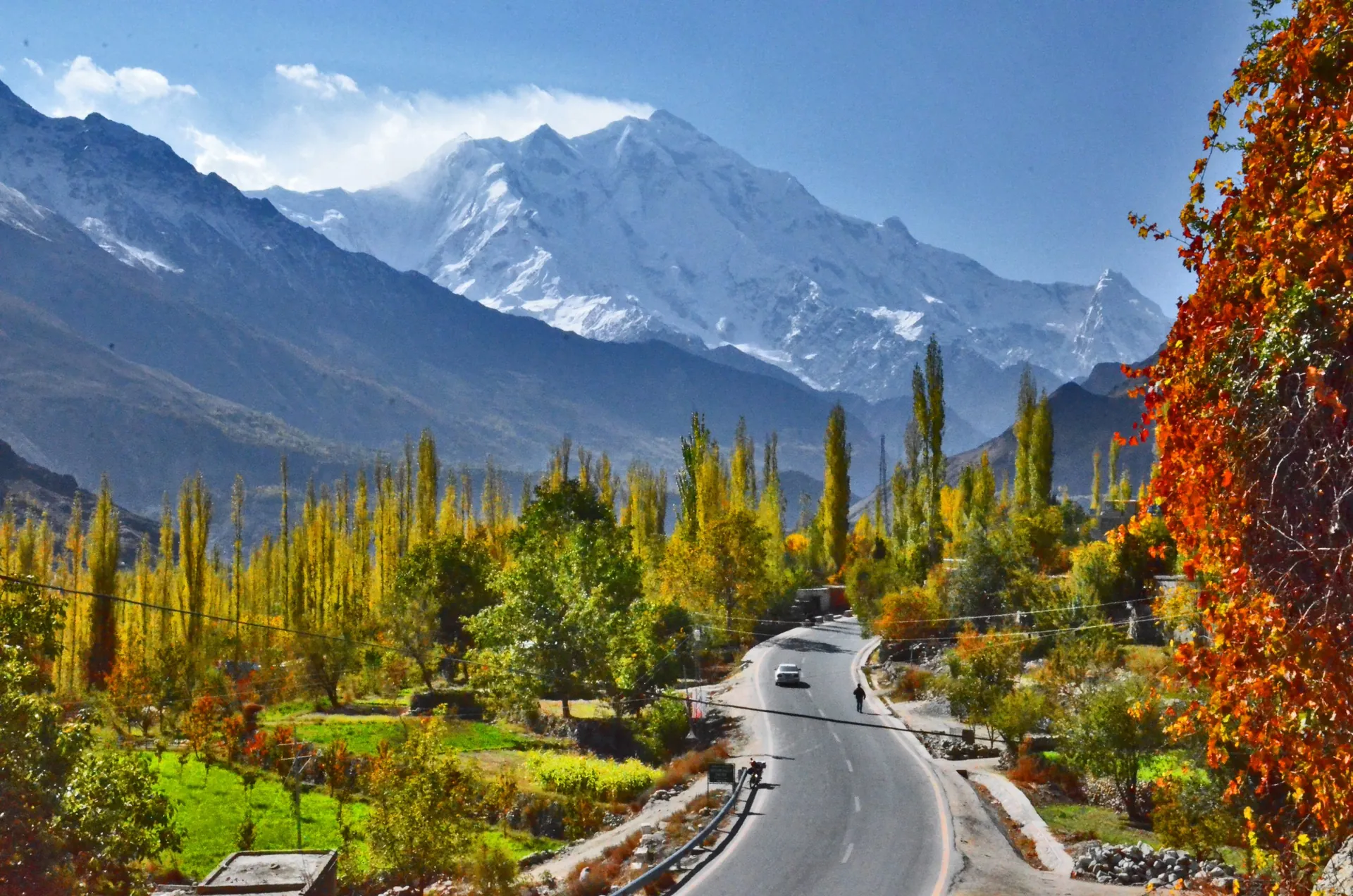
Rakaposhi Base Camp offers a mesmerizing gateway to one of the world’s most beautiful mountains. Located in the Gilgit-Baltistan region, the base camp serves as the starting point for trekkers aiming to explore the majestic Rakaposhi, which towers at 25,551 feet. The crisp mountain air and striking landscapes make this location a must-visit.
Brief Overview
Rakaposhi Base Camp sits within the Nagar Valley, about 100 km north of Gilgit. The climate is typically cool, even in summer, with temperatures ranging between 50°F and 70°F. The best time to visit spans from May to October when the weather is mild, and the trails are accessible.
Top Attractions
- Rakaposhi Viewpoint: Offers panoramic views of Rakaposhi’s snow-covered peak.
- Minapin Village: Starting point for most treks, known for its scenic beauty.
- Diran Base Camp: Another popular trekking site nearby.
- Hapakun Meadows: Ideal for camping, surrounded by lush greenery.
Hidden Gems
- Tagaphari Viewpoint: Less crowded but provides equally stunning views.
- Minapin Glacier: Accessible with a short trek, featuring dramatic ice formations.
Accommodations
| Accommodation | Type | Facilities | Price Range |
|---|---|---|---|
| Rakaposhi View Hotel | Guest House | Wi-Fi, Restaurant, Parking | $30 – $50 |
| Minapin Lodge | Homestay | Basic amenities | $20 – $35 |
| Diran Guest House | Guest House | Breakfast, Hot Showers | $25 – $45 |
Dining Highlights
- Minapin Tea House: Local tea and snacks.
- Hunza Traditional Foods: Offers traditional Hunza cuisine like chapshuro and biryani.
- Mountain Cafe: Features continental and local dishes.
Transportation & Practical Tips
Travelers usually reach Rakaposhi Base Camp via a mix of air and road transport. Fly into Gilgit Airport (domestic flights from Islamabad), then take a local bus or hire a private vehicle to Minapin Village. From there, it’s a trek to the base camp.
- Health Tips: Acclimatize properly to avoid altitude sickness.
- Sustainability: Carry reusable water bottles, avoid plastic waste, and respect local flora and fauna.
- Budget Tips: Cash is preferred, and ATMs are scarce. Plan your budget in advance.
This guide aims to inspire and assist you in exploring the enchanting Rakaposhi Base Camp. Whether you’re trekking or simply soaking in the vistas, your visit promises an unforgettable experience.
Margala Hills
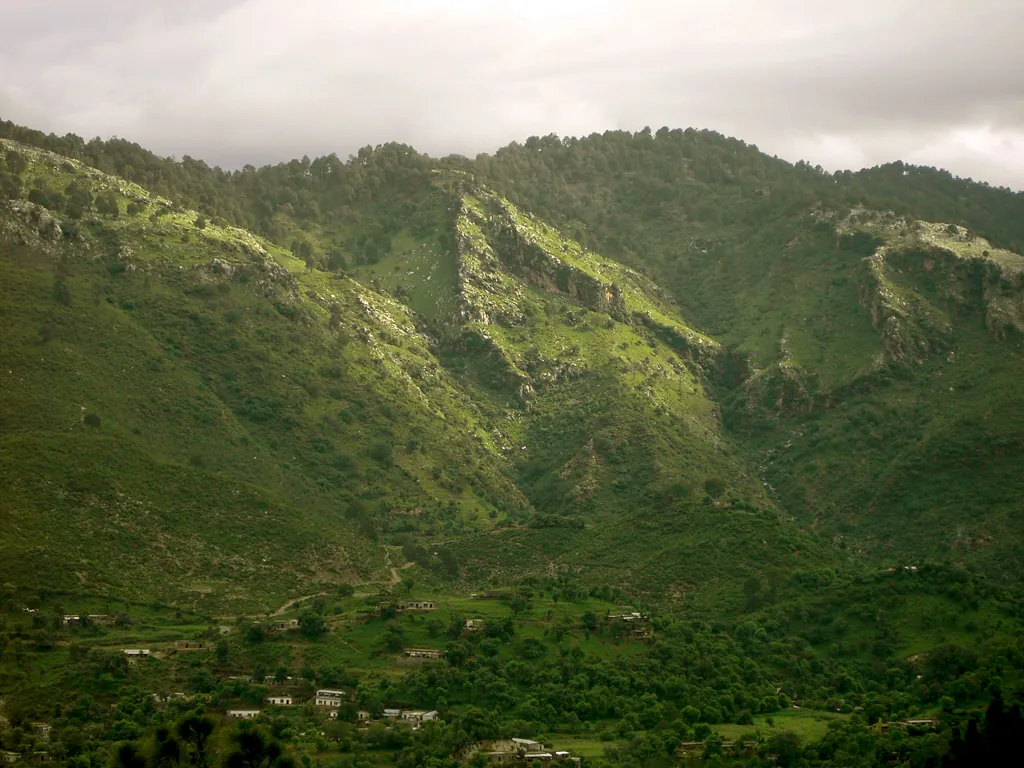
Margala Hills, an extension of the Himalayan range, offers a stunning natural retreat near Pakistan’s capital, Islamabad. Nestled within Margalla Hills National Park, the area is renowned for its lush forests, diverse wildlife, and scenic hiking trails.
Overview
Location: Margala Hills, Islamabad
Climate: Mild winters, hot summers
Best Time to Visit: October to March
Top Attractions
- Daman-e-Koh: Panoramic viewpoint.
- Trail 5: Popular hiking path.
- Monal Restaurant: Dining with a view.
- Pir Sohawa: Scenic point and picnic spot.
- Saidpur Village: Historical village with cultural sites.
Hidden Gems
- Trail 6: Quieter and less frequented.
- Talhaar Valley: Off-the-beaten-path hiking.
Accommodations
| Accommodation | Type | Price Range (USD) | Notable Features |
|---|---|---|---|
| Serena Hotel | Luxury | $150 – $250 | Close to hiking trails, premium amenities |
| Hotel Hillview | Mid-range | $50 – $100 | Central location, good service |
| Islamabad Hotel | Budget | $30 – $50 | Affordable, basic comforts |
Dining Highlights
- Des Pardes: Traditional Pakistani food in Saidpur Village.
- The Monal: International and local cuisine with panoramic views.
- Street Food Stalls: Located in Saddar and F-10 Markaz, offering local snacks like channa chaat and golgappa.
- Getting There: 30-minute drive from Islamabad city center.
- Local Transport: Taxis, ride-hailing apps, and local buses.
- Hiking Tips: Bring water, wear sturdy shoes, and start early to avoid midday heat.
- Sustainability: Carry reusable bottles, avoid littering, and stay on marked trails.
- Budget Considerations: Entry to trails is free; dining varies from $5 to $20 per meal.
Explore Margala Hills to experience tranquility and natural beauty right by the bustling city of Islamabad.
Rohtas Fort
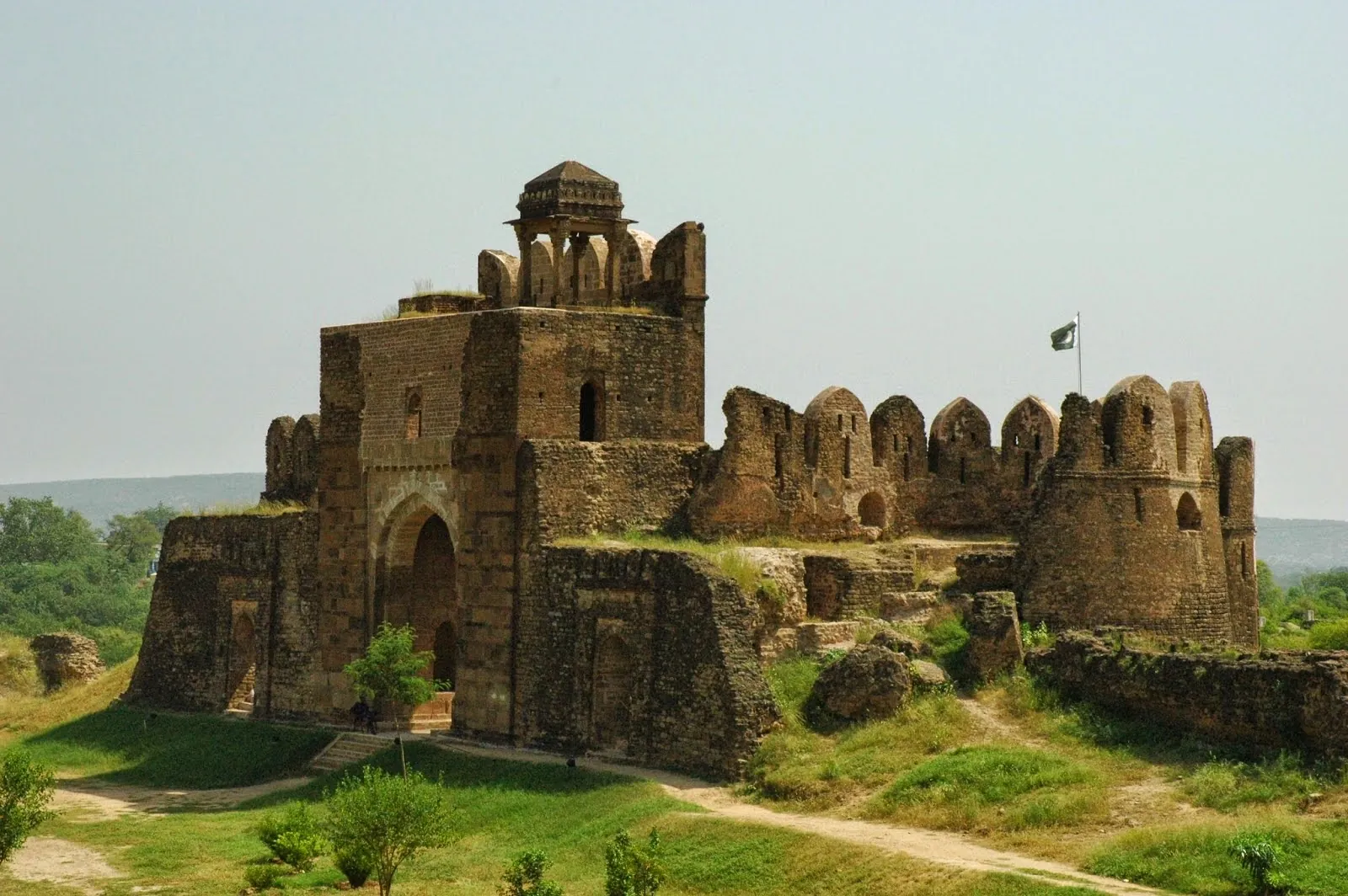
Nestled in the verdant hills of Punjab, Rohtas Fort stands as a sentinel of history. This UNESCO World Heritage site, built in the 16th century by Sher Shah Suri, is an architectural marvel embodying a blend of Persian and Indian influences.
Overview
Located near the city of Jhelum, Rohtas Fort enjoys a moderate climate, with the best time to visit between October and March when temperatures range from 60°F to 75°F. The fort sprawls over an area of 70 hectares, beckoning explorers and history buffs alike.
Top Attractions
- Sohail Gate: The main entrance, showcasing intricate carvings and calligraphy.
- Shahi Mosque: A small mosque with ornate frescoes.
- Habsh Khan’s Mausoleum: A tomb with beautiful brickwork and geometric patterns.
- The Rani Mahal: A palace believed to have been used by the women of the royal family.
- Baolis (Stepwells): Ancient water reservoirs ingeniously designed for water conservation.
Hidden Gems
- Pippli Gate: Often overlooked, this gate offers a quieter glimpse into the fort’s architecture.
- Hanging Houses: Tucked in the lesser-trodden areas, these small structures provide a unique perspective on medieval living conditions.
- Temple of Shiva: Hidden within the fort’s precincts, it reflects the cultural diversity of the era.
Accommodations
| Accommodation | Type | Proximity to Fort | Price Range per Night ($) |
|---|---|---|---|
| Pearl Continental Bhurban | Luxury | 45 miles | 150-250 |
| Al-Noor Hotel | Budget | 10 miles | 30-60 |
| Hilltop Hotel | Mid-range | 15 miles | 70-120 |
Dining Highlights
Explore local eateries around Jhelum for authentic Punjabi cuisine. Don’t miss out on dishes like Sarson ka Saag and Makki di Roti. For a unique experience, visit Saffron Restaurant for a fusion of traditional and contemporary flavors.
Transportation & Practical Tips
- By Car: Rent a car from Islamabad; it’s a 2-hour drive along the GT Road.
- By Bus: Regular buses operate from major cities like Lahore and Islamabad to Dina, from where you can hire a taxi to the fort.
Practical Tips:
- Wear Comfortable Footwear: The fort’s terrain requires sturdy shoes for walking.
- Guided Tours: Local guides available at the entrance can provide rich historical narratives.
- Sustainability: Respect the historical site by not littering and following designated pathways.
Seasonal Variations
Visit during spring or fall for pleasant weather. Summers can be hot, with temperatures often exceeding 90°F, while winters may drop to around 40°F. Monsoon season brings sporadic rains, adding a different charm but making some areas slippery.
- Entry Fee: Approximately $2 for local tourists and $5 for foreigners.
- Guided Tour: Around $10 per group.
- Food: Budget $10-$20 for a meal at a local restaurant.
Rohtas Fort offers a fascinating journey into Pakistan’s rich heritage. Pack your bags and immerse yourself in the history and beauty of this majestic fort.
Naltar Valley
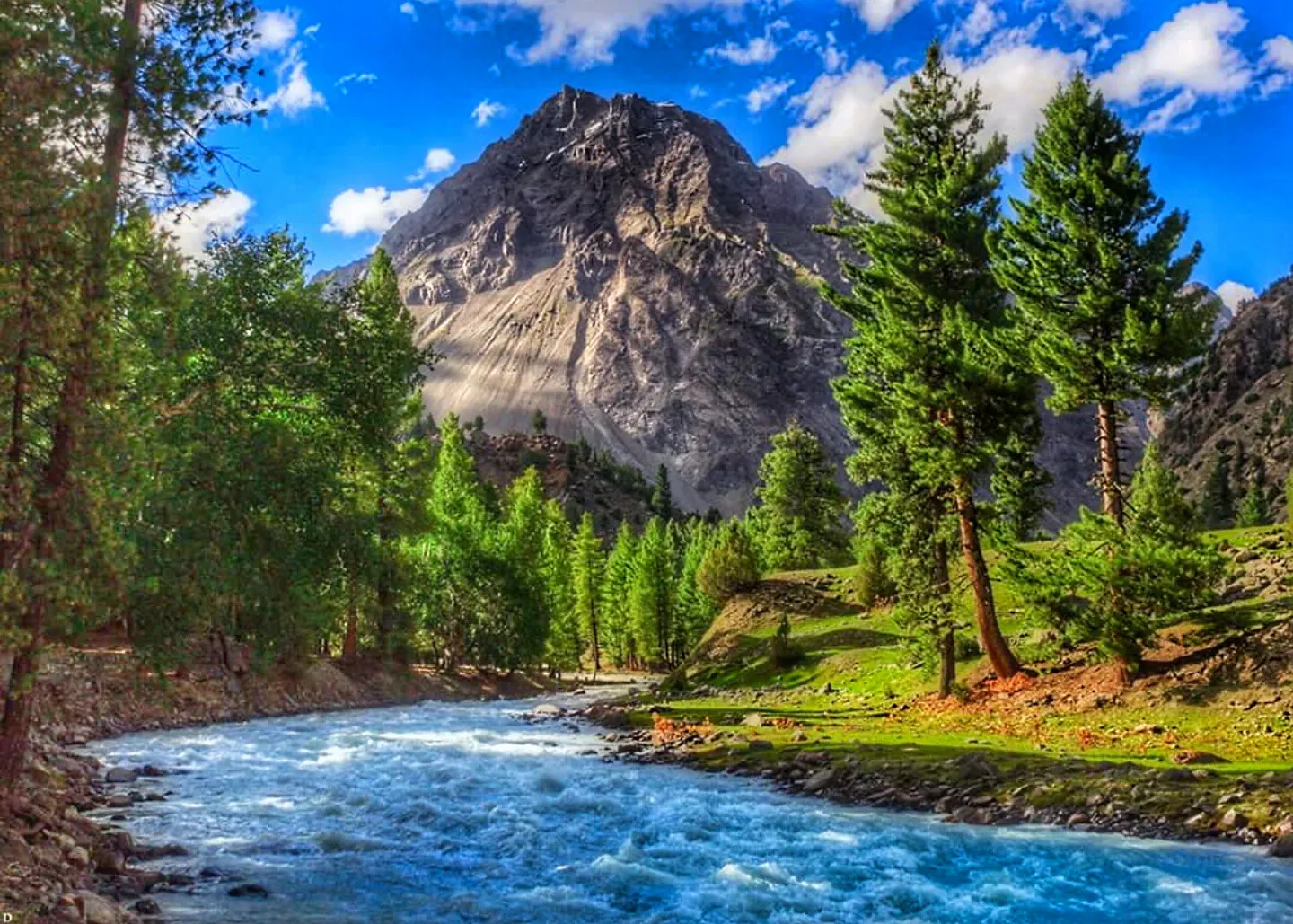
Captivating Intro
Naltar Valley’s a hidden wonder nestled in Gilgit-Baltistan, renowned for its vibrant landscapes and mystical aura. Picture serene pine forests, emerald lakes, and snow-capped peaks creating a postcard-perfect scene. Travelers often describe it as an untouched paradise, drawing nature lovers and adventurers alike.
Brief Overview
Naltar Valley is located approximately 34 kilometers from Gilgit. With a subarctic climate, summers are mild, while winters are harsh and snowy. The best time to visit is between May and October, when the weather is pleasant, and the valley is in full bloom.
Top Attractions
- Naltar Lakes: The valley’s three famous lakes, Satrangi Lake, Blue Lake, and Fairy Lake, boast striking colors.
- Naltar Ski Resort: One of Pakistan’s oldest ski resorts, it attracts skiers and snowboarders during winter.
- Naltar Wildlife Sanctuary: Encounter rare species like the Red Fox and Snow Leopard amidst lush greenery.
- Naltar Valley Viewpoint: Offers panoramic views of the valley and surrounding peaks.
Hidden Gems
- Naltar Bala Village: A quaint village offering a glimpse into local life and unique traditional houses.
- Strawberry Fields: During summer, fields sprout with wild strawberries, making for a delightful sight.
- Charpai Fields: Local farming fields where you can relax on traditional beds under the sky.
Accommodations
| Accommodation Name | Type | Price Range | Amenities |
|---|---|---|---|
| Naltar Palace Hotel | Hotel | $60-$100 | Wi-Fi, Dining, Room Service |
| Pine Hut Guest House | Guest House | $30-$50 | Garden, Local Cuisine |
| Naltar Ski Resort Lodge | Resort | $80-$120 | Ski Rentals, Guided Tours, Meals |
Dining Highlights
- Traditional Cuisine: Savor local dishes like Chapshoro (a meat-filled bread) and Gyal (buckwheat pancakes).
- Mountain Tea: Try local herbal teas made from native plants, offering a unique taste and health benefits.
- Fresh Produce: Enjoy fresh, organic fruits like cherries and walnuts, usually grown in the valley.
Transportation & Practical Tips
- Getting There: From Gilgit, you can hire a jeep or take a local bus. Keep in mind the condition of roads, especially during winter.
- Local Transport: Within the valley, jeeps and motorbikes are common. For short distances, walking’s highly rewarding.
- Travel Tips: Dress in layers to adapt to weather changes, carry cash as ATMs are rare, and bring reusable water bottles to reduce plastic waste.
Climate Data
| Month | Temperature (°C) | Rainfall (mm) | Comment |
|---|---|---|---|
| May | 10 – 20 | 30 | Best for hiking and sightseeing |
| July | 15 – 25 | 20 | Perfect for viewing lush landscapes |
| September | 10 – 20 | 10 | Ideal for clear, crisp days |
Sustainability Tips
- Waste Management: Pack out all trash, including food packaging and plastic bottles.
- Local Support: Choose local guides and accommodations to support the community.
- Eco-friendly Practices: Use biodegradable products and minimize the use of non-renewable resources.
Budget Considerations
Naltar Valley offers various options to suit different budgets. From affordable guest houses to plush lodges, you can find accommodations that offer both comfort and value. Budget travelers should plan for transportation costs as well, given the valley’s remote location.
Explore Naltar Valley’s stunning landscapes and vibrant culture, embracing adventure while making thoughtful, sustainable travel choices.
Katpana Desert
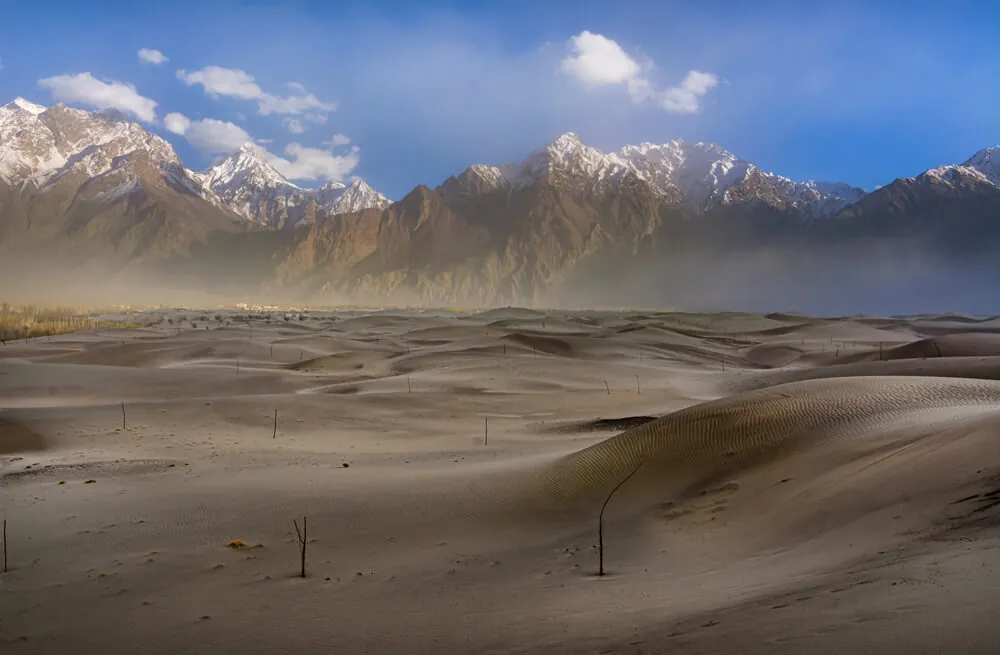
Captivating Intro
Imagine a desert blanketed by snow. Surreal, right? Katpana Desert, also known as the Cold Desert, offers just that—a stark world where sand dunes coexist with icy layers.
Brief Overview
Located in Skardu, Gilgit-Baltistan, Katpana boasts an altitude of over 7,300 feet. Winter transforms it into a frozen wonderland, while summer’s milder temperatures range between 50°F and 77°F. The best time to visit is from May to October, avoiding the harsh winters.
Top Attractions
- Sand Dunes: These unique formations create a mesmerizing view, particularly in late spring and early summer.
- Indus River: Flowing nearby, it provides a dramatic contrast to the arid desert.
- Skardu Town: Just 15 minutes away, it offers cultural experiences and local markets.
Hidden Gems
- Sheosar Lake: A high-altitude lake offering tranquil views and picnic spots.
- Satpara Lake: This natural lake is perfect for boating and fishing, a short drive away.
- Hussainabad Waterfall: A hidden waterfall in nearby Hussainabad village, ideal for a serene afternoon.
Accommodations
| Accommodation Name | Type | Price Range Per Night | Distance from Katpana Desert |
|---|---|---|---|
| Serena Shigar Fort | Luxury Hotel | $150 – $300 | 30 minutes |
| PTDC Motel Skardu | Mid-Range Hotel | $70 – $150 | 15 minutes |
| Katpana Desert Camp | Budget Camp | $30 – $70 | On-site |
Dining Highlights
- Yak Curry: A local delicacy found in Skardu’s markets.
- Chapshoro: Traditional bread stuffed with minced meat—available at roadside stalls.
- Fruit Gardens: Don’t miss the seasonal apricots and cherries.
Transportation & Practical Tips
- Reaching Katpana: Skardu Airport connects directly with Islamabad. Taxis, available at the airport, take you to Katpana Desert.
- Local Transport: For exploring nearby attractions, renting a jeep offers flexibility.
- Seasonal Variations: Winter requires layered clothing and good insulation. Summer necessitates sunscreen and hydration.
- Sustainability Tips: Avoid plastic bottles; use a refillable water container. Support local businesses by buying handmade crafts.
Activity Prices
| Activity | Price (USD) | Duration |
|---|---|---|
| Jeep Safari | $50 – $100 | Full Day |
| Boating at Satpara Lake | $5 – $10 | 1 Hour |
| Fishing Permit | $3 | Per Day |
Budget Considerations
Visiting Katpana Desert can suit different budgets. Luxury travelers will enjoy Serena Shigar Fort, while budget-conscious explorers can opt for Katpana Desert Camp. Allocate around $30-$50 daily for food and activities to ensure a fulfilling experience.
Engage your sense of adventure, bask in the stark beauty of Katpana Desert, and create memories in this beguiling world, a unique confluence of sand and frost.
Conclusion
Pakistan offers a treasure trove of breathtaking destinations that promise unforgettable experiences. From the lush meadows of Swat Valley to the serene landscapes of Hunza Valley and the unique charm of the Katpana Desert, each location has its own story to tell.
Whether you’re an adventure enthusiast, a history buff, or a nature lover, there’s something for everyone in this diverse country. So pack your bags and get ready to explore the hidden gems and iconic sites that make Pakistan a must-visit destination.
Begin on a journey that will leave you in awe and create memories to last a lifetime.
Frequently Asked Questions
What are some top travel destinations in Pakistan?
Swat Valley, Hunza Valley, Yarkhun Valley, Phander Lake, and Lahore are among Pakistan’s top travel destinations. Each offers unique attractions like stunning landscapes, historical sites, and vibrant culture.
What makes Swat Valley a must-visit location?
Nicknamed the “Switzerland of Pakistan,” Swat Valley features lush meadows, alpine forests, and clear blue rivers, ideal for nature lovers and adventure seekers. Key sites include Boyun Village, Kandol and Spindhor Lakes, and Ushu Forest.
Where is Hunza Valley located, and why should I visit?
Hunza Valley is in the Gilgit-Baltistan region. It’s known for breathtaking landscapes and charming villages. Must-see attractions include Passu Cones, Attabad Lake, and Baltit Fort.
What is unique about Yarkhun Valley?
Yarkhun Valley is celebrated for its untouched beauty. Key attractions include Shandur Pass and Broghil Valley, making it ideal for those seeking a serene getaway.
What are the main attractions in Lahore?
Lahore is rich in history and culture. Main attractions include the Lahore Fort, Badshahi Mosque, and Shalimar Gardens. It’s also known for its vibrant arts scene and delicious cuisine.
Which national parks should I visit in Pakistan?
Hingol National Park, Deosai Plains National Park, and Khunjerab National Park are must-visit parks. They offer unique landscapes, diverse wildlife, and opportunities for adventure and cultural exploration.
What are the key features of Chapursan Valley?
Chapursan Valley offers a serene environment and breathtaking landscapes. Notable attractions include Baba Ghundi Shrine, Yashkuk Glacier, and Kumrat Sar Lake.
Why is Rohtas Fort significant?
Rohtas Fort is a UNESCO World Heritage site, built in the 16th century. Key features include Sohail Gate, Shahi Mosque, and Habsh Khan’s Mausoleum, making it a historical marvel.
What can I expect to see in Naltar Valley?
Naltar Valley is known for vibrant landscapes, including serene pine forests and emerald lakes. Key attractions are the colorful Naltar Lakes and Naltar Ski Resort.
Why visit the Katpana Desert?
Katpana Desert, or the Cold Desert, offers a unique experience of snow-blanketed sand dunes. Nearby attractions include the Indus River, Sheosar Lake, and Satpara Lake.
What practical tips should I know before visiting Pakistan?
Plan for diverse weather conditions, respect local customs, and always prioritize safety. It’s also advisable to carry local currency and consider sustainability practices while traveling.
Is traveling to Pakistan safe?
Yes, many areas in Pakistan are safe for travelers, including Islamabad, Lahore, and the northern regions. Always check the latest travel advisories for updated information.

